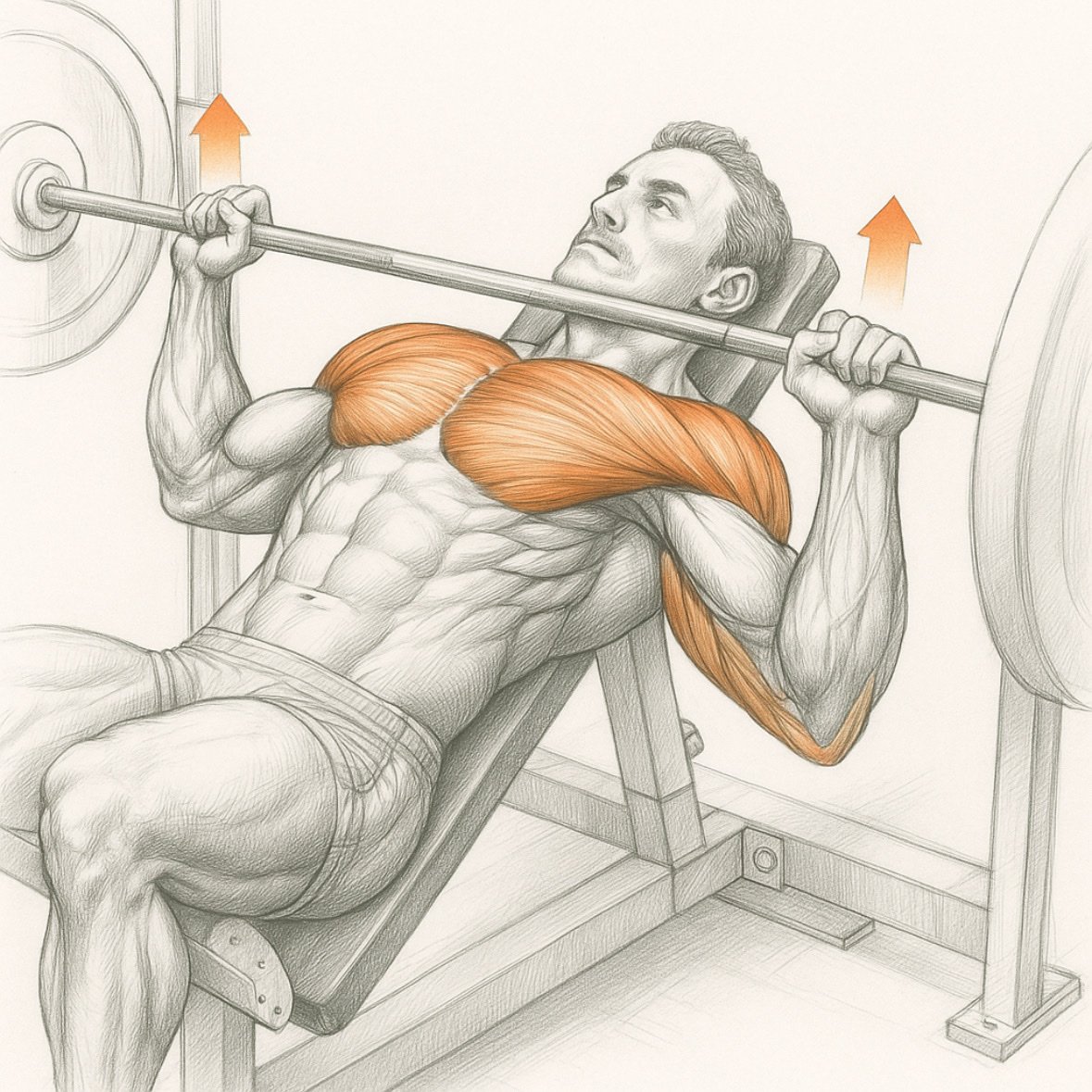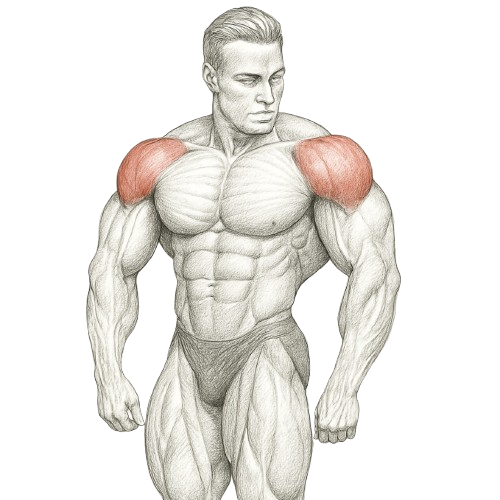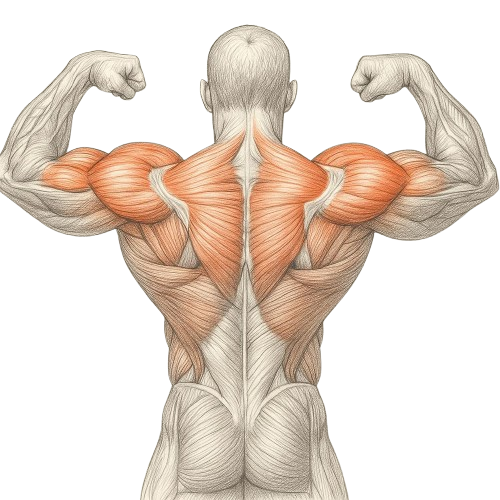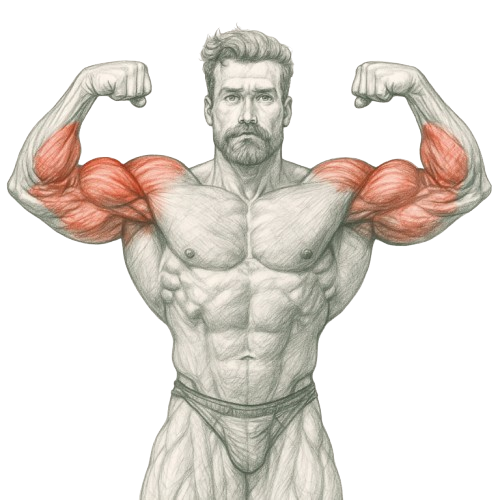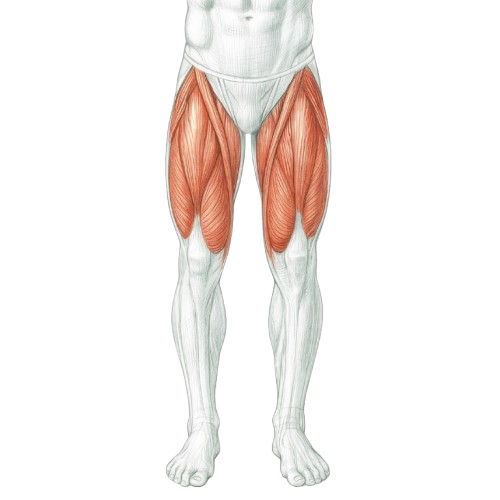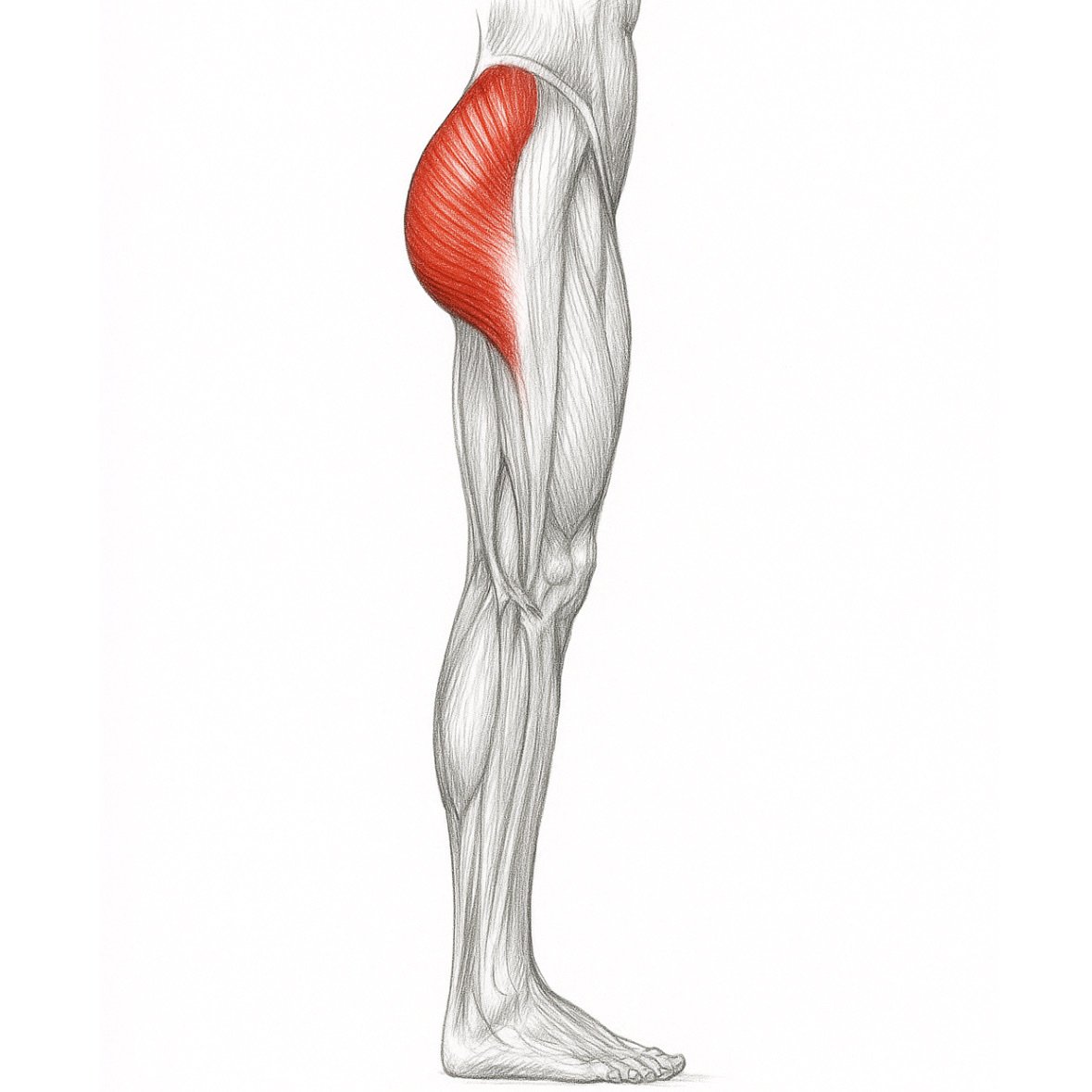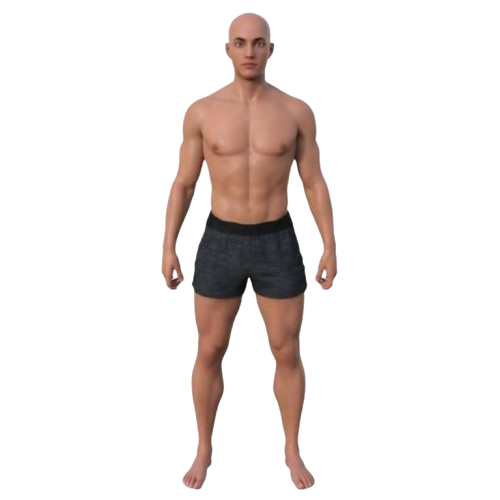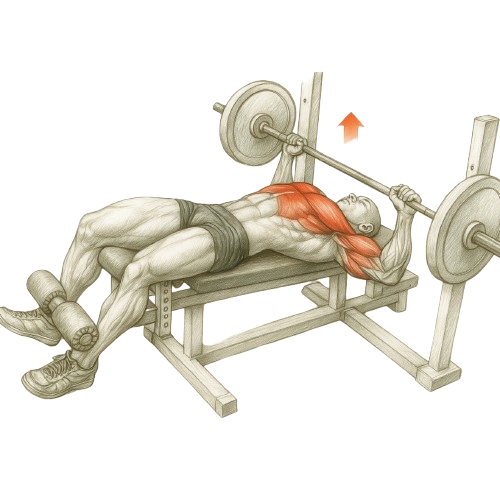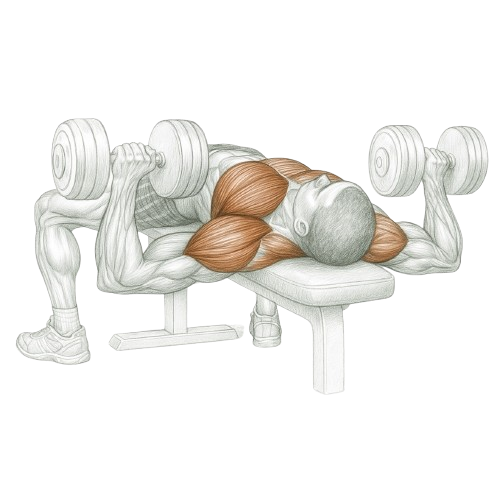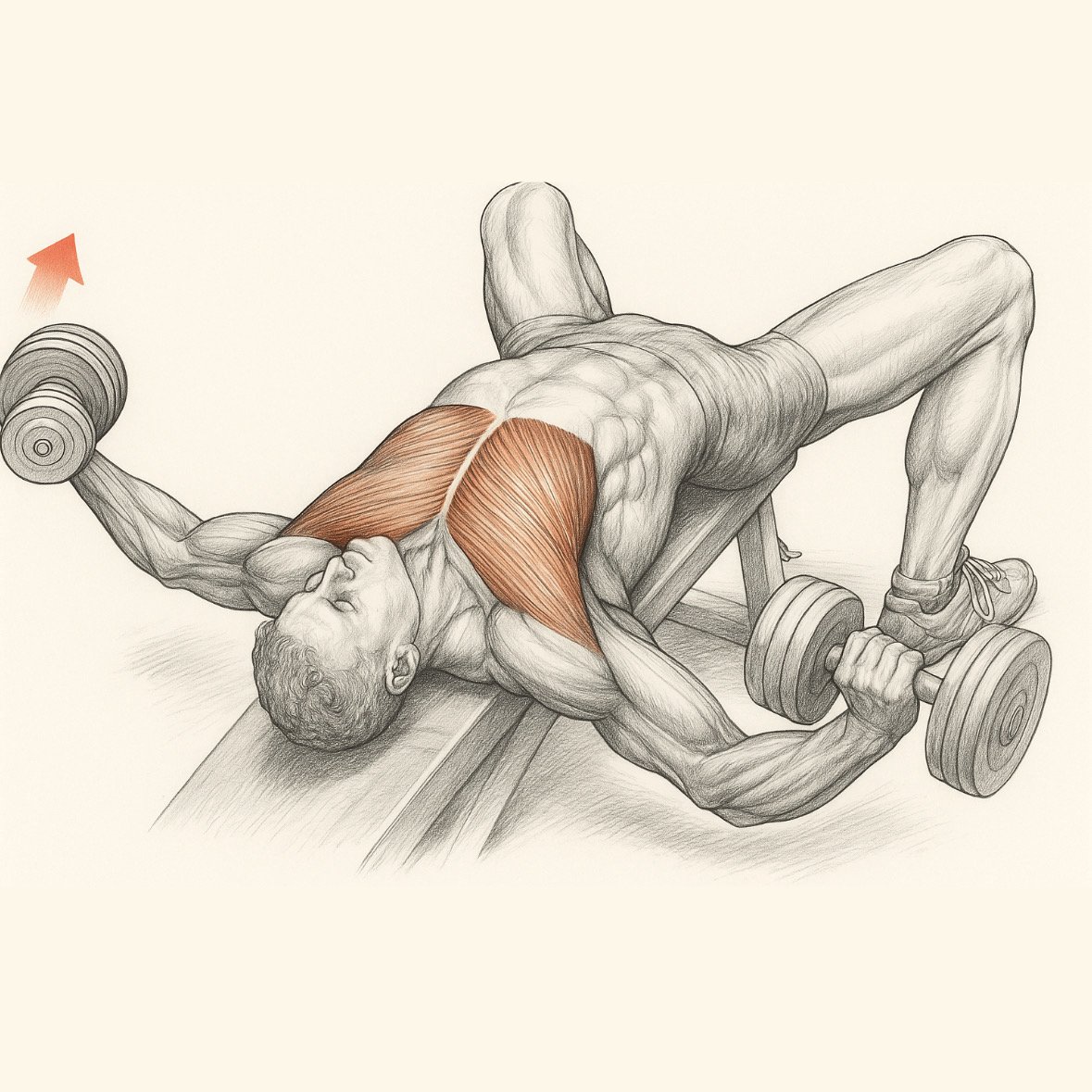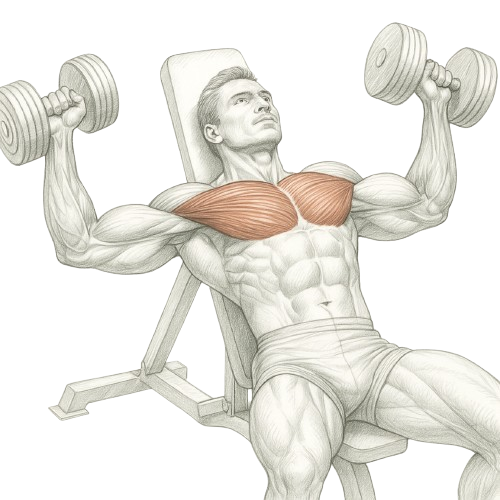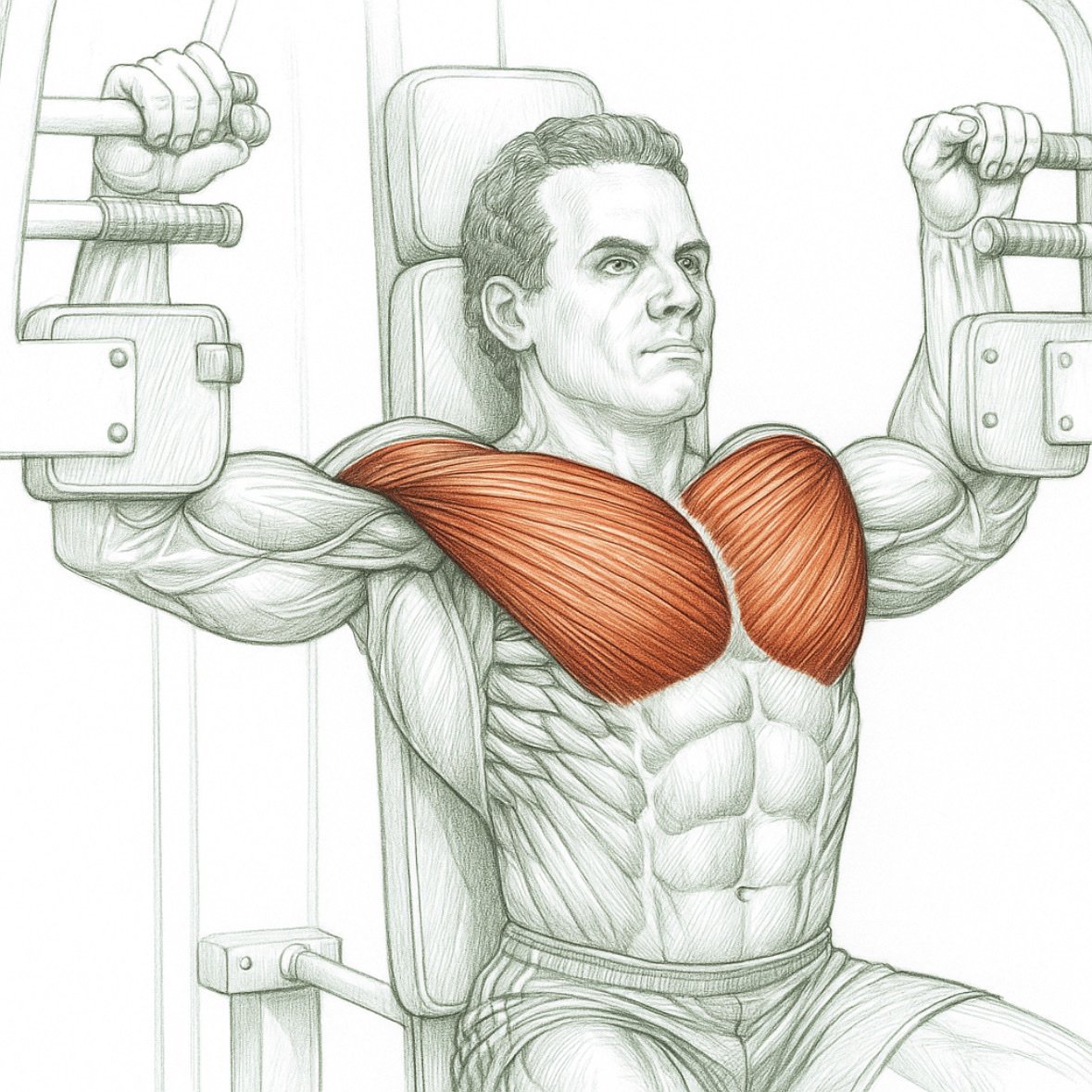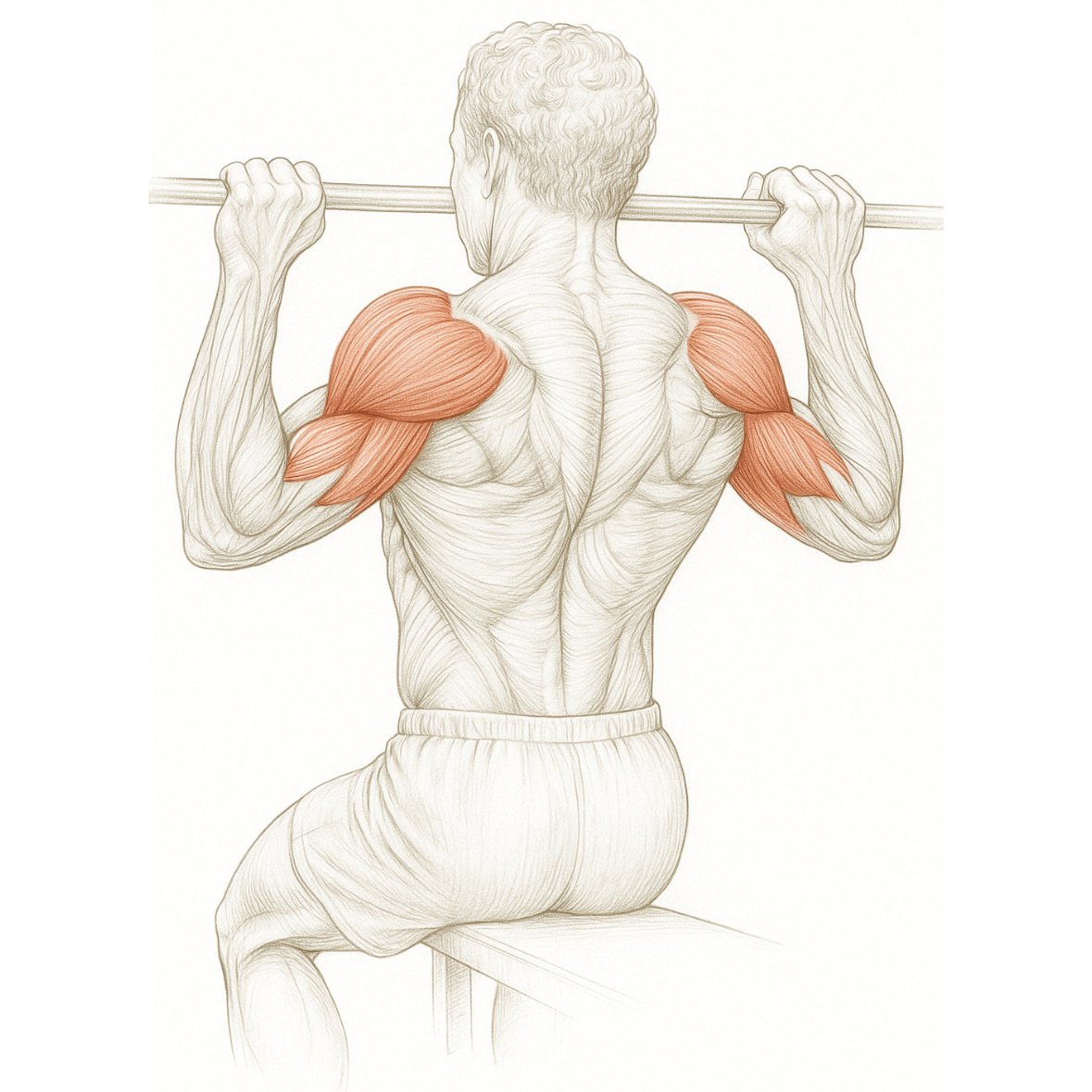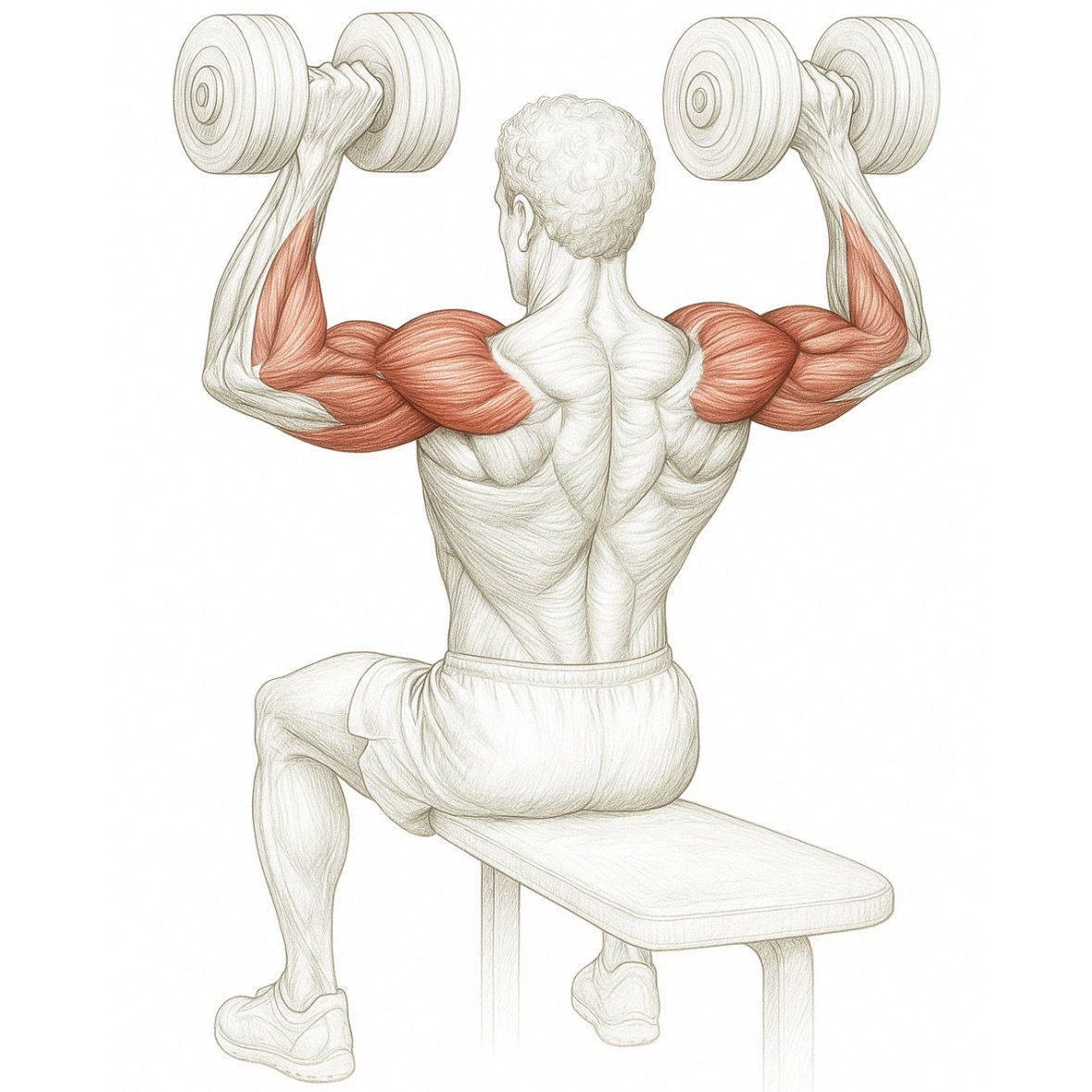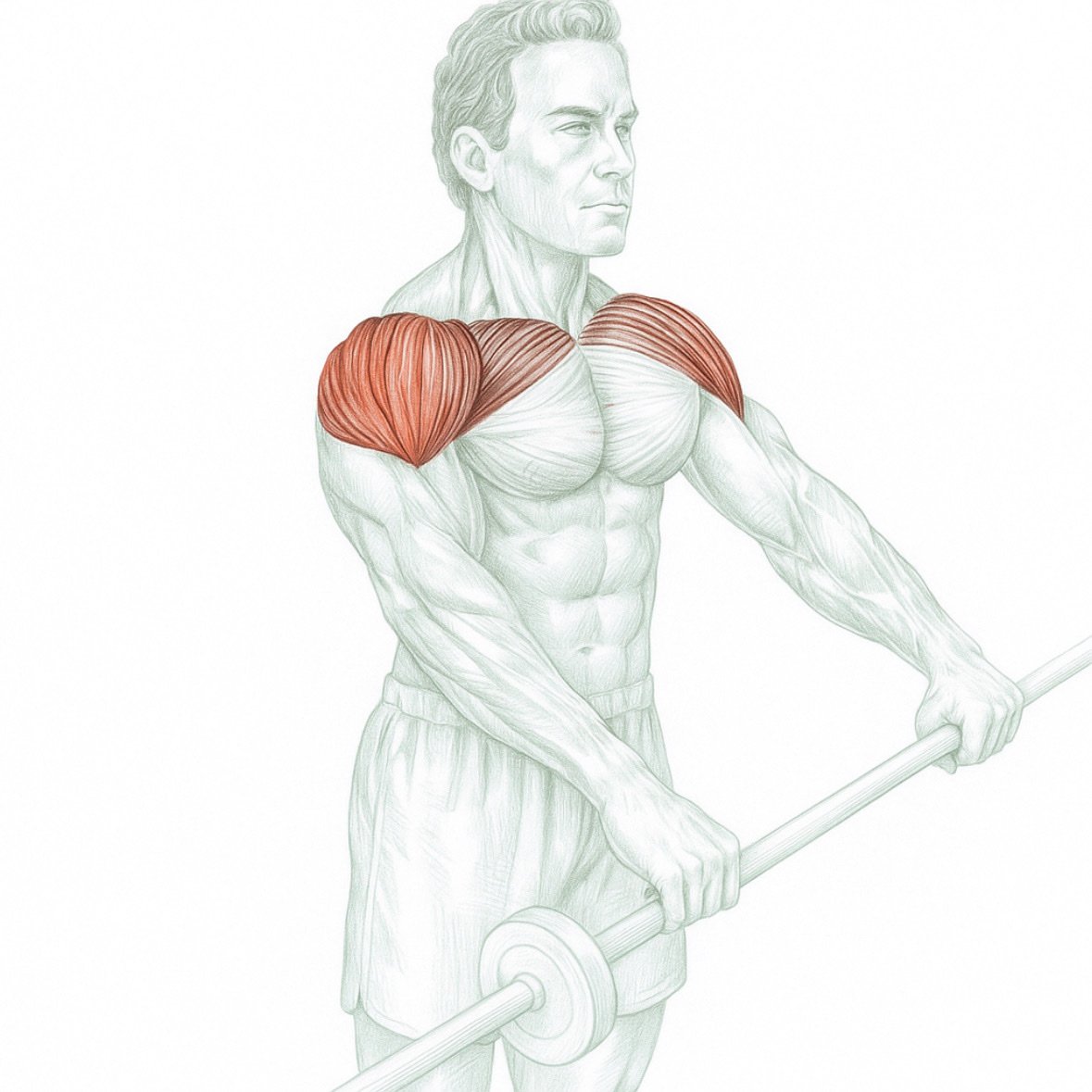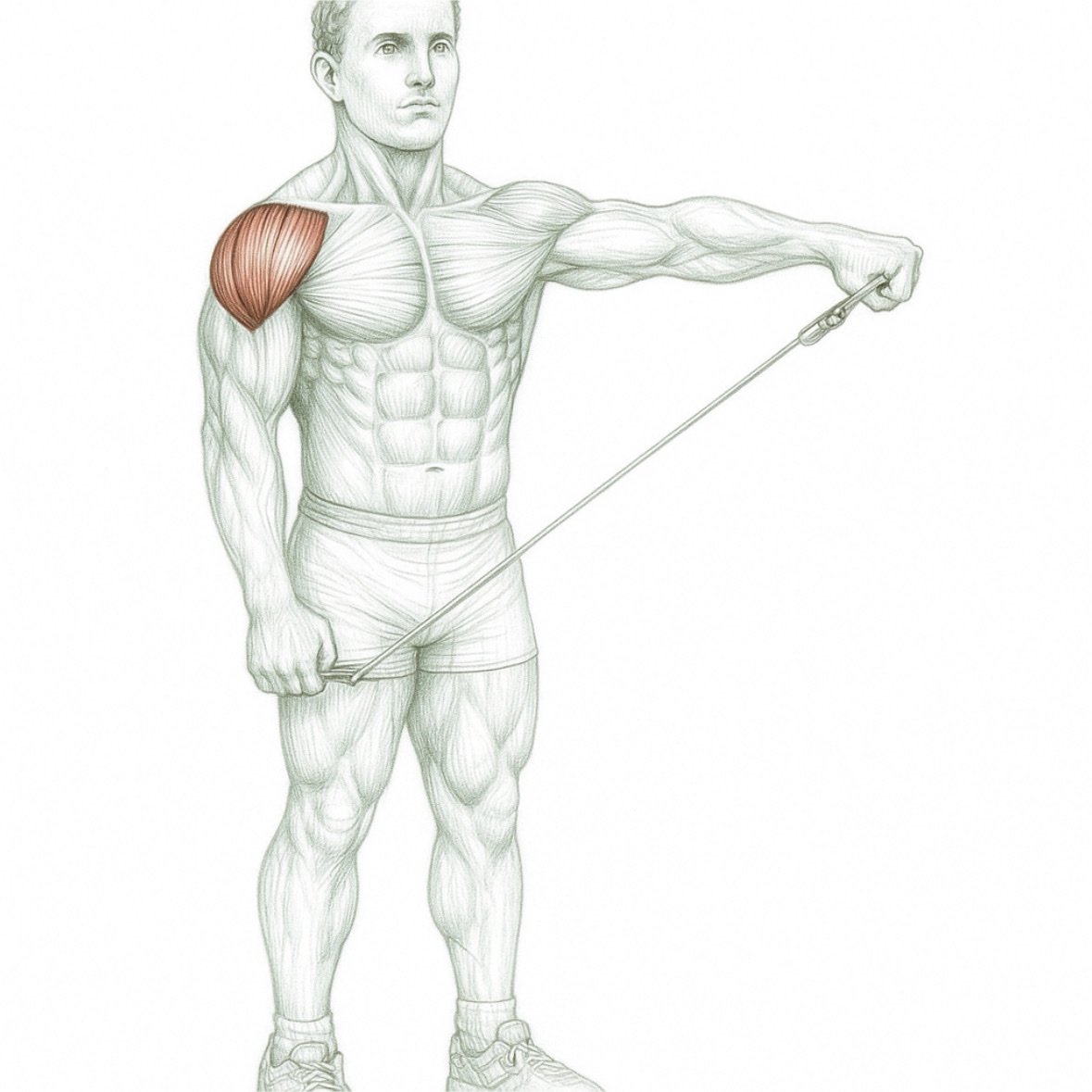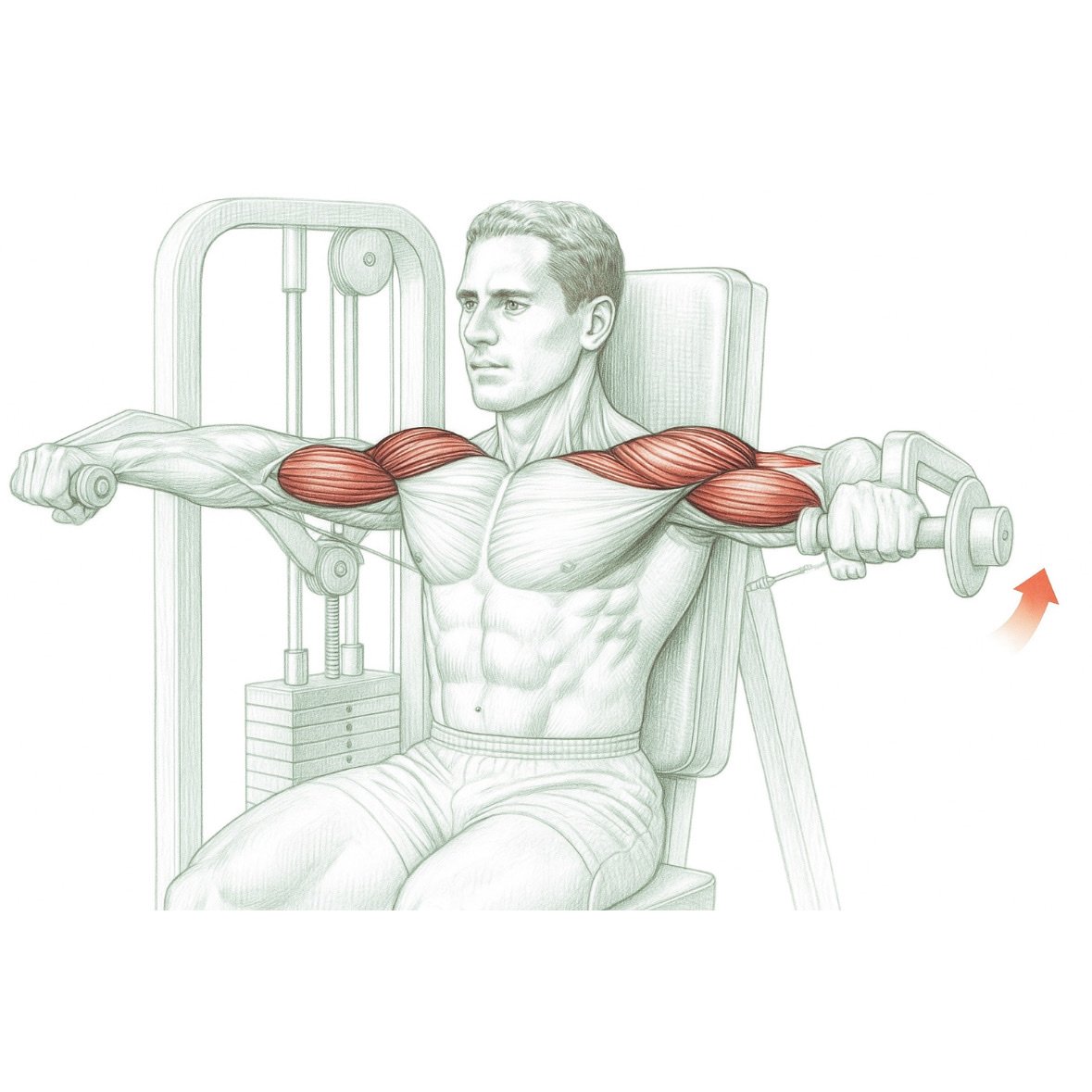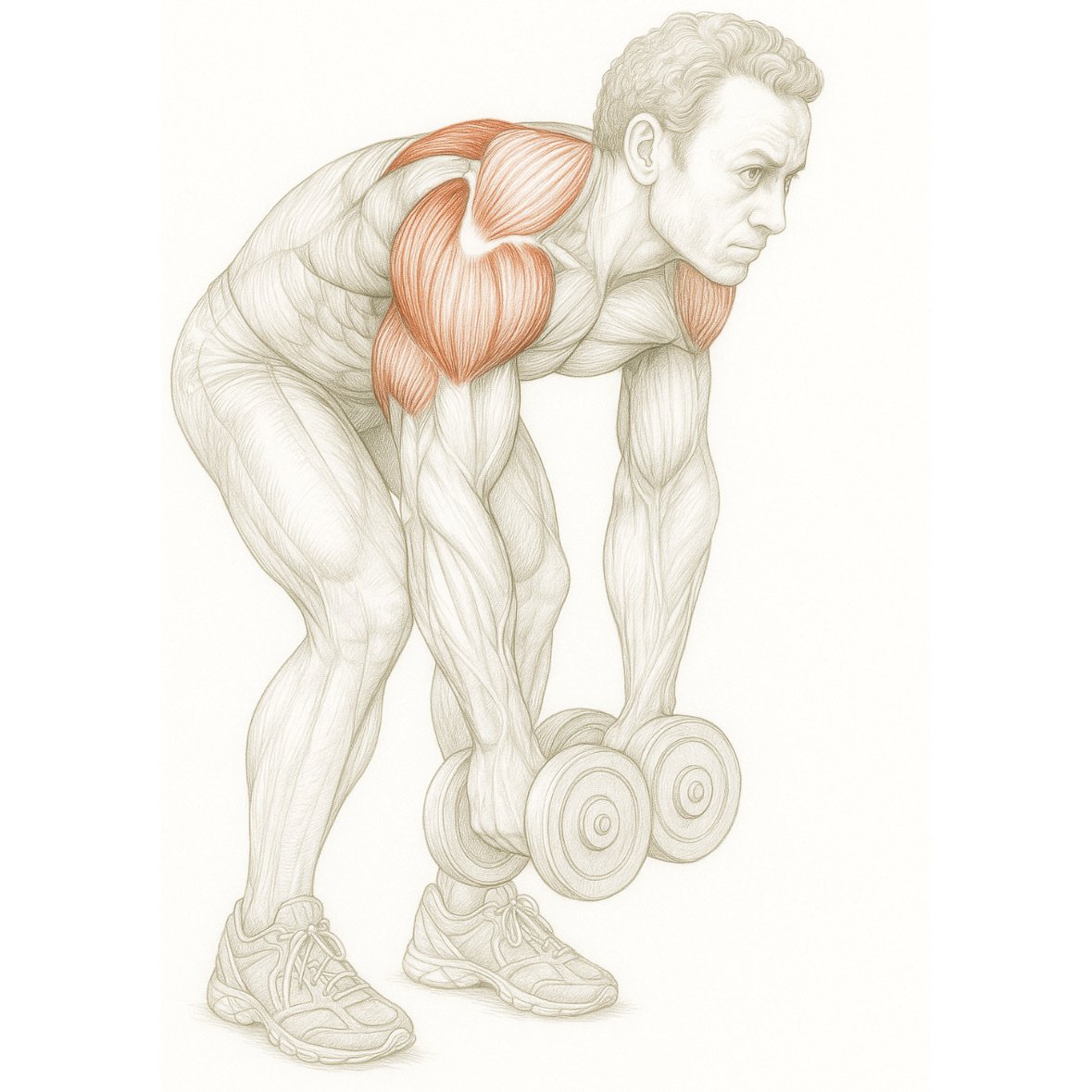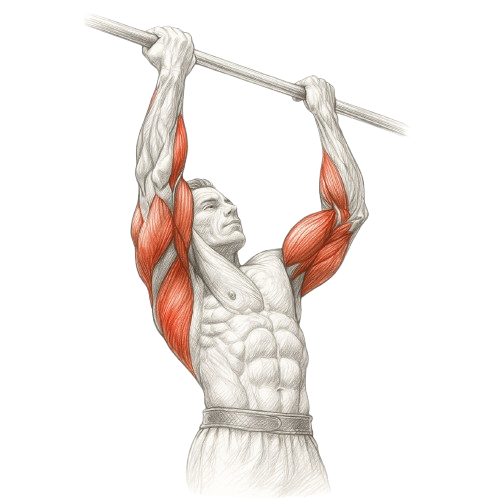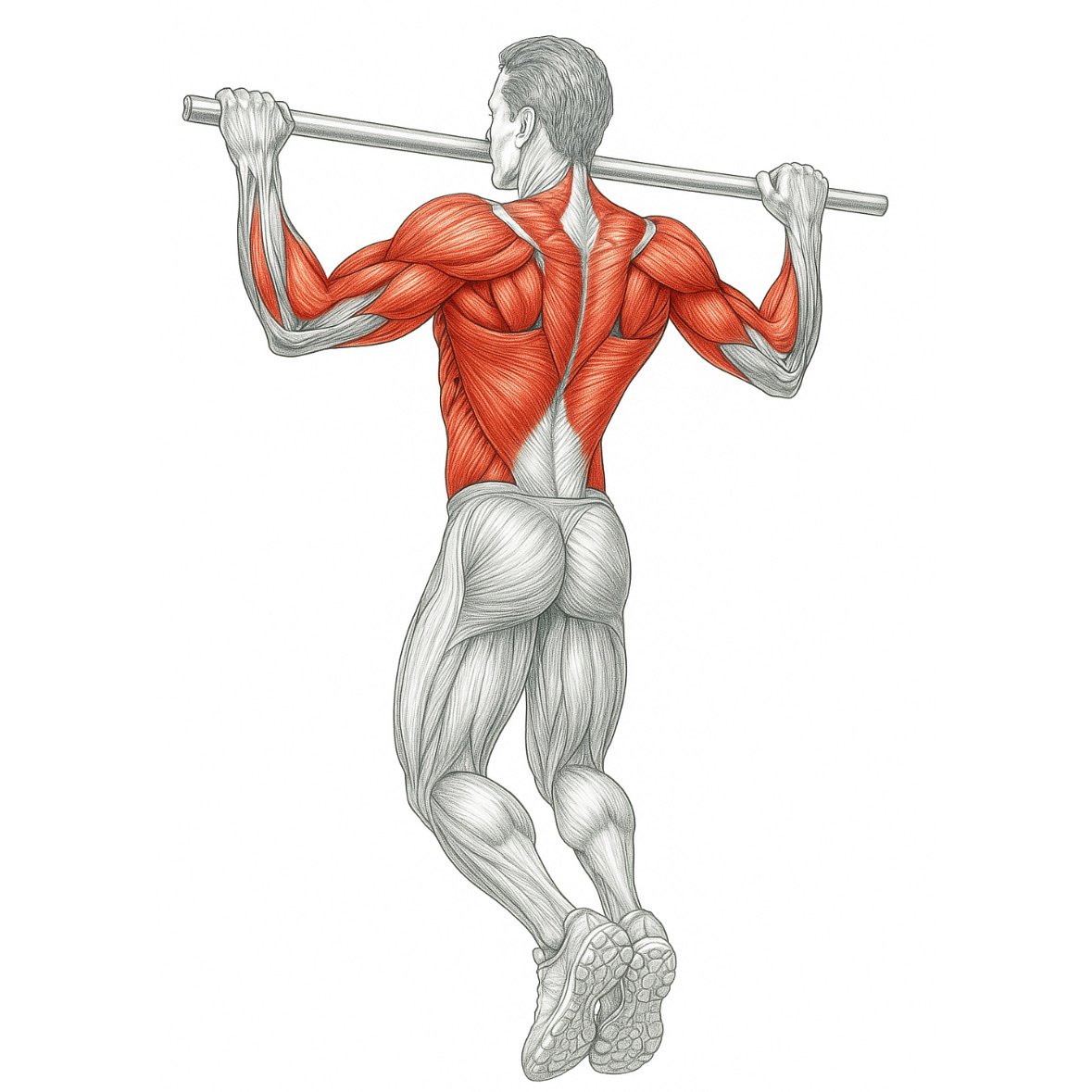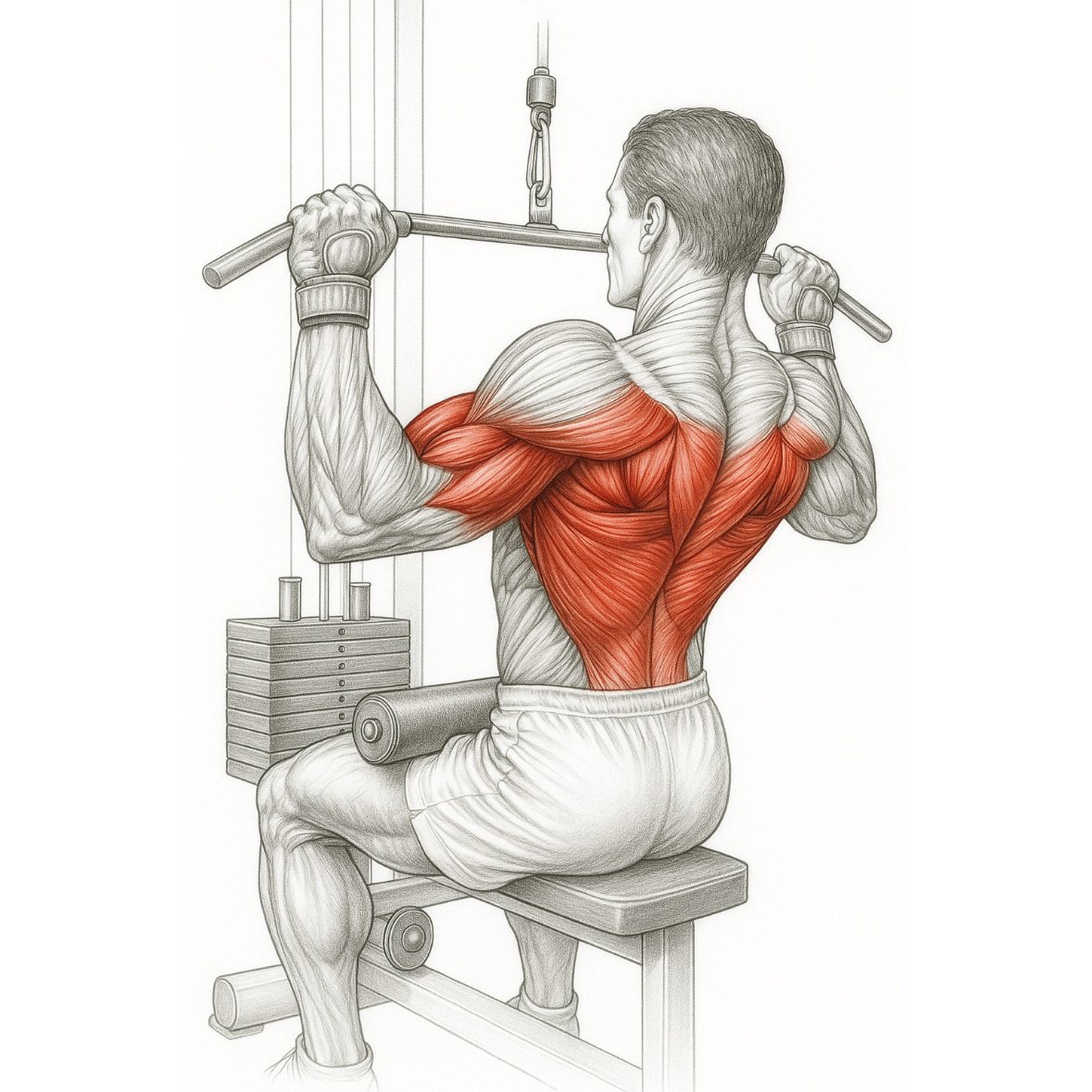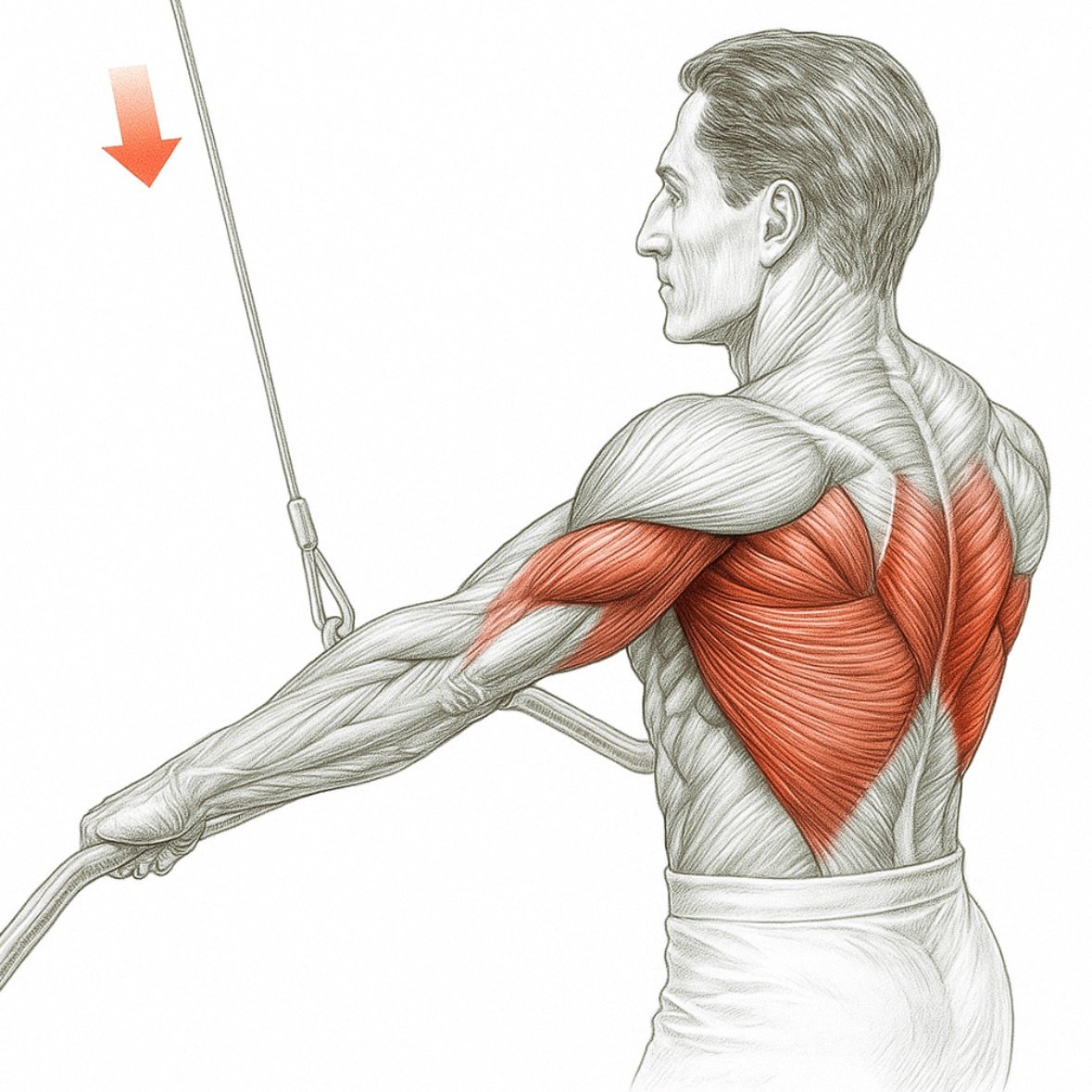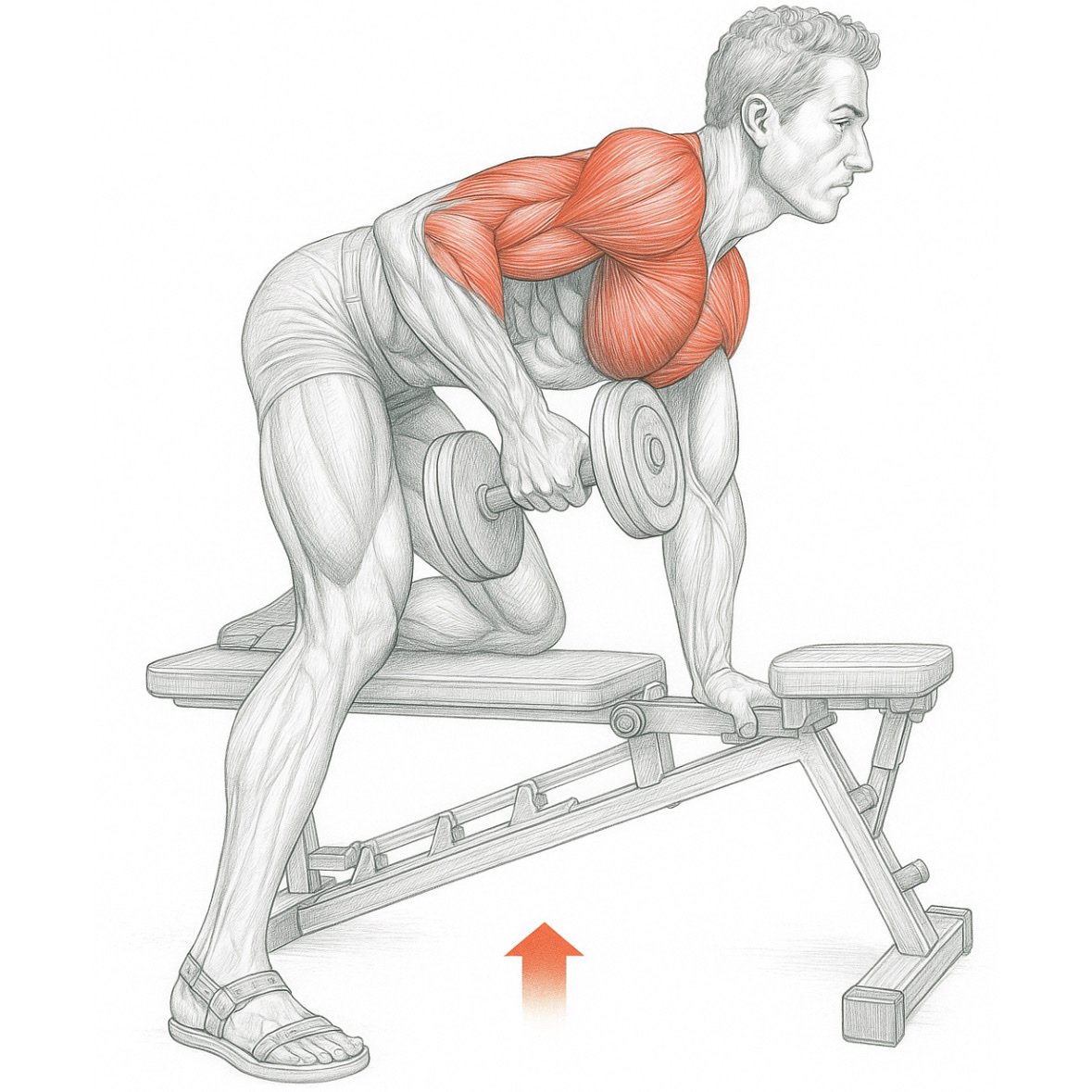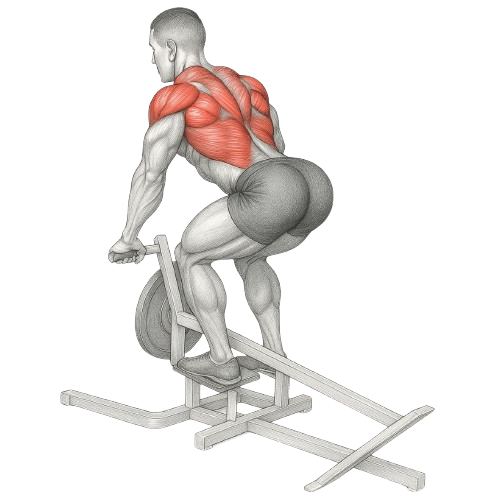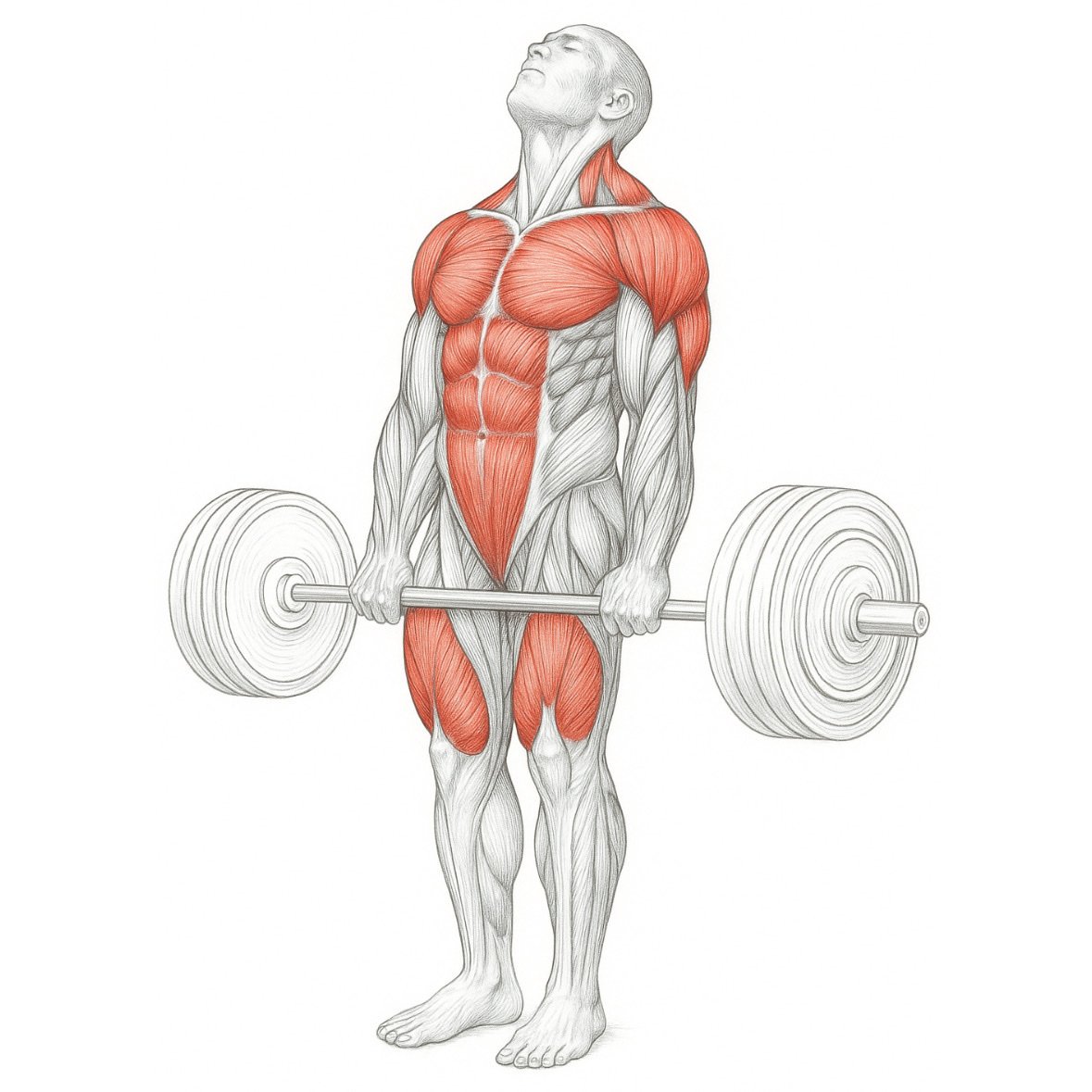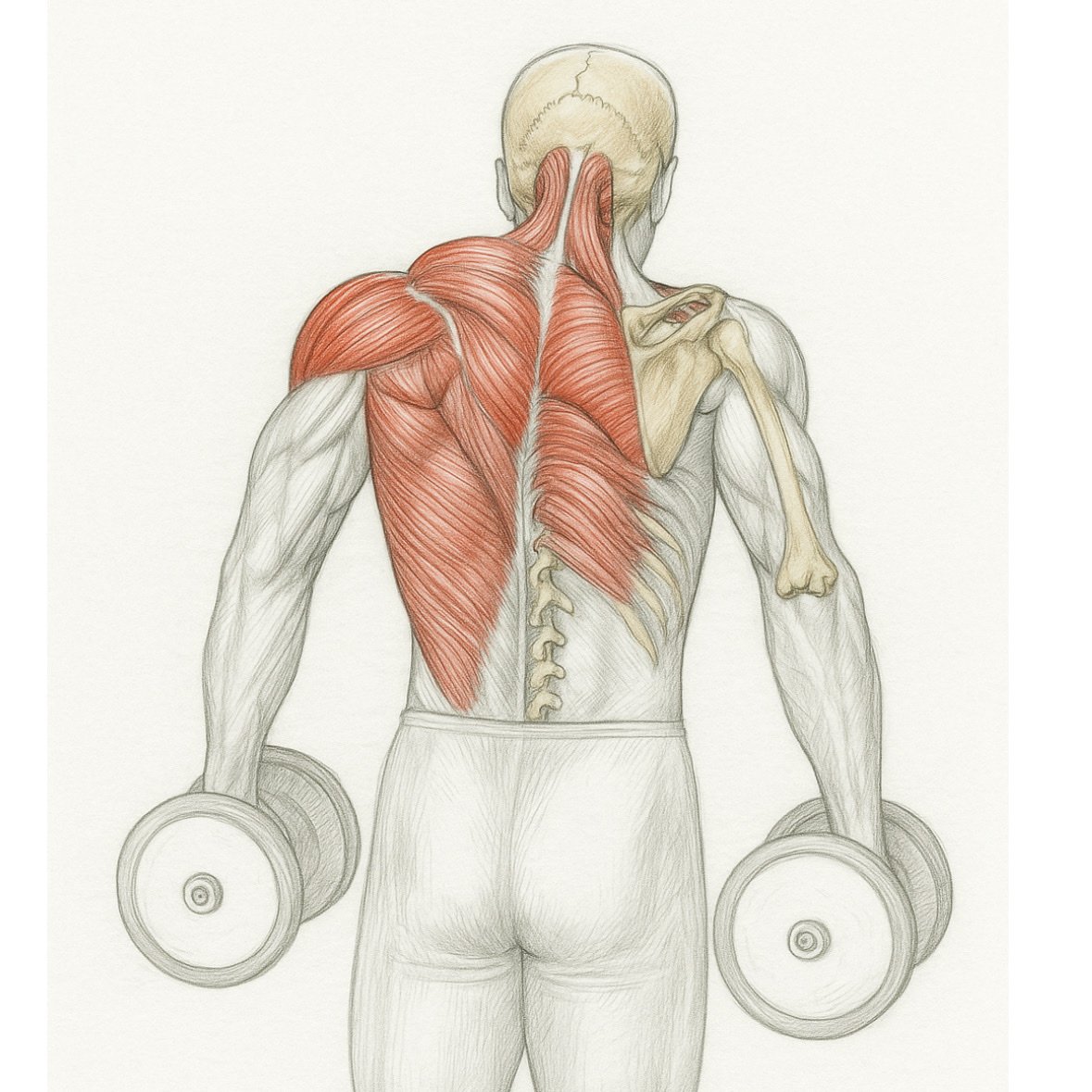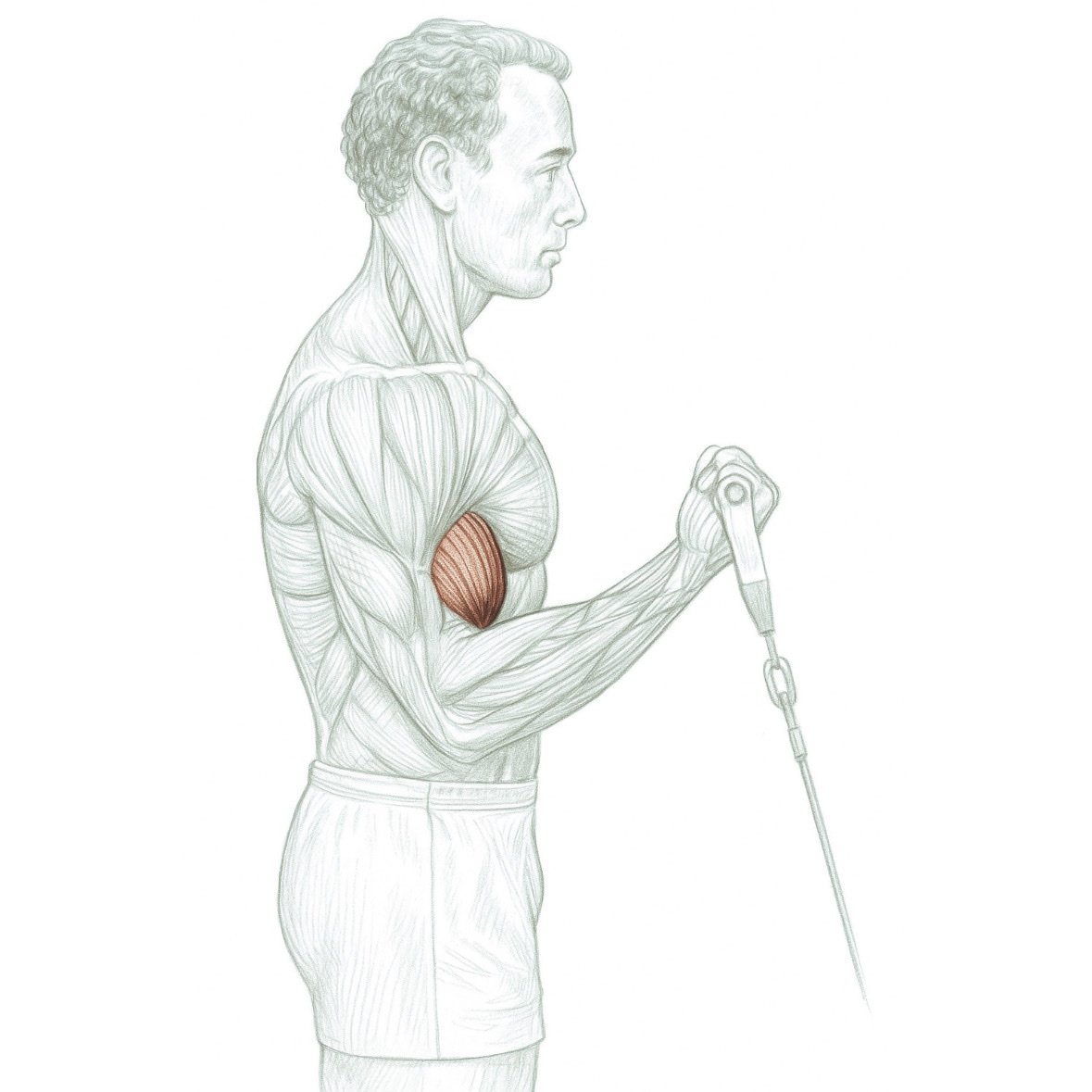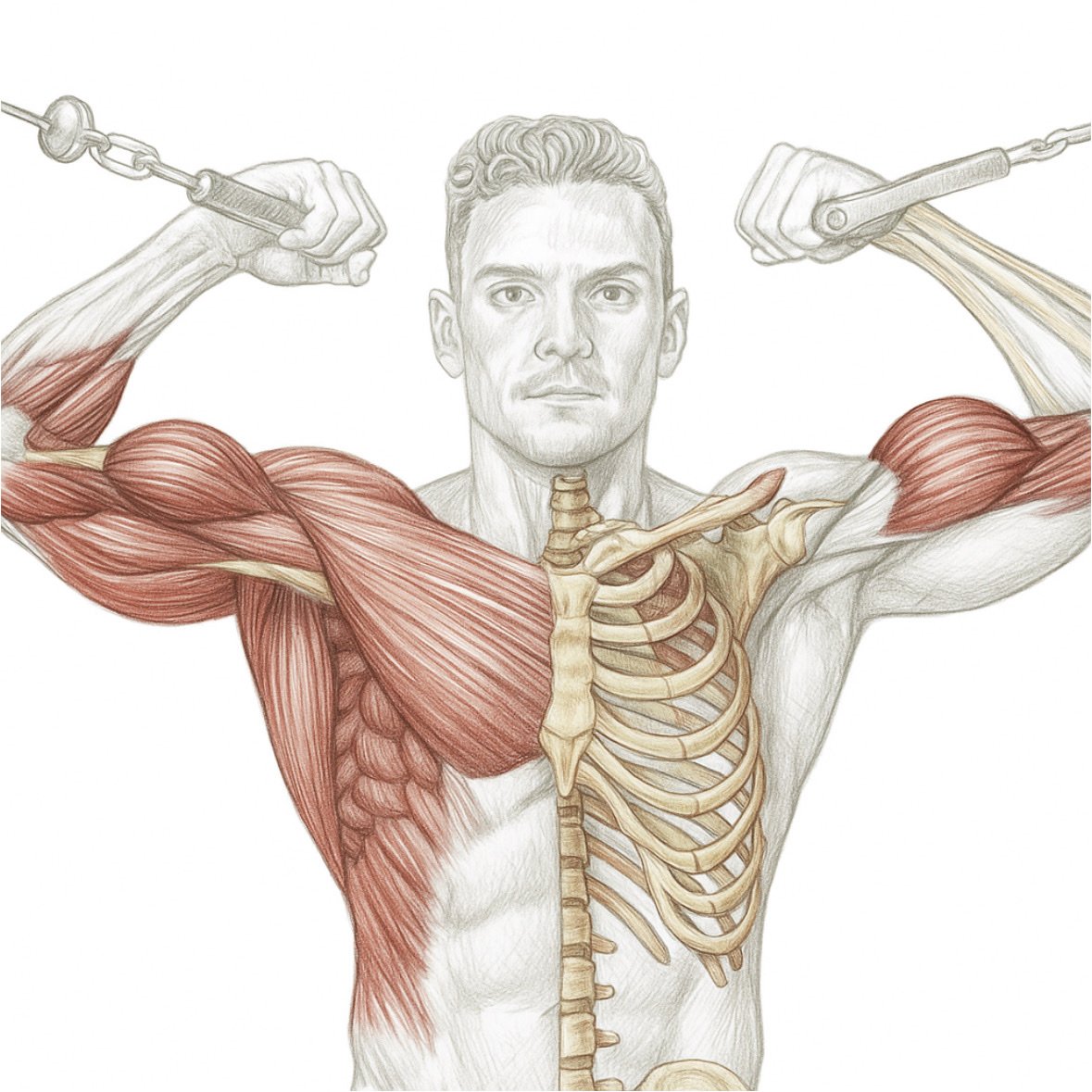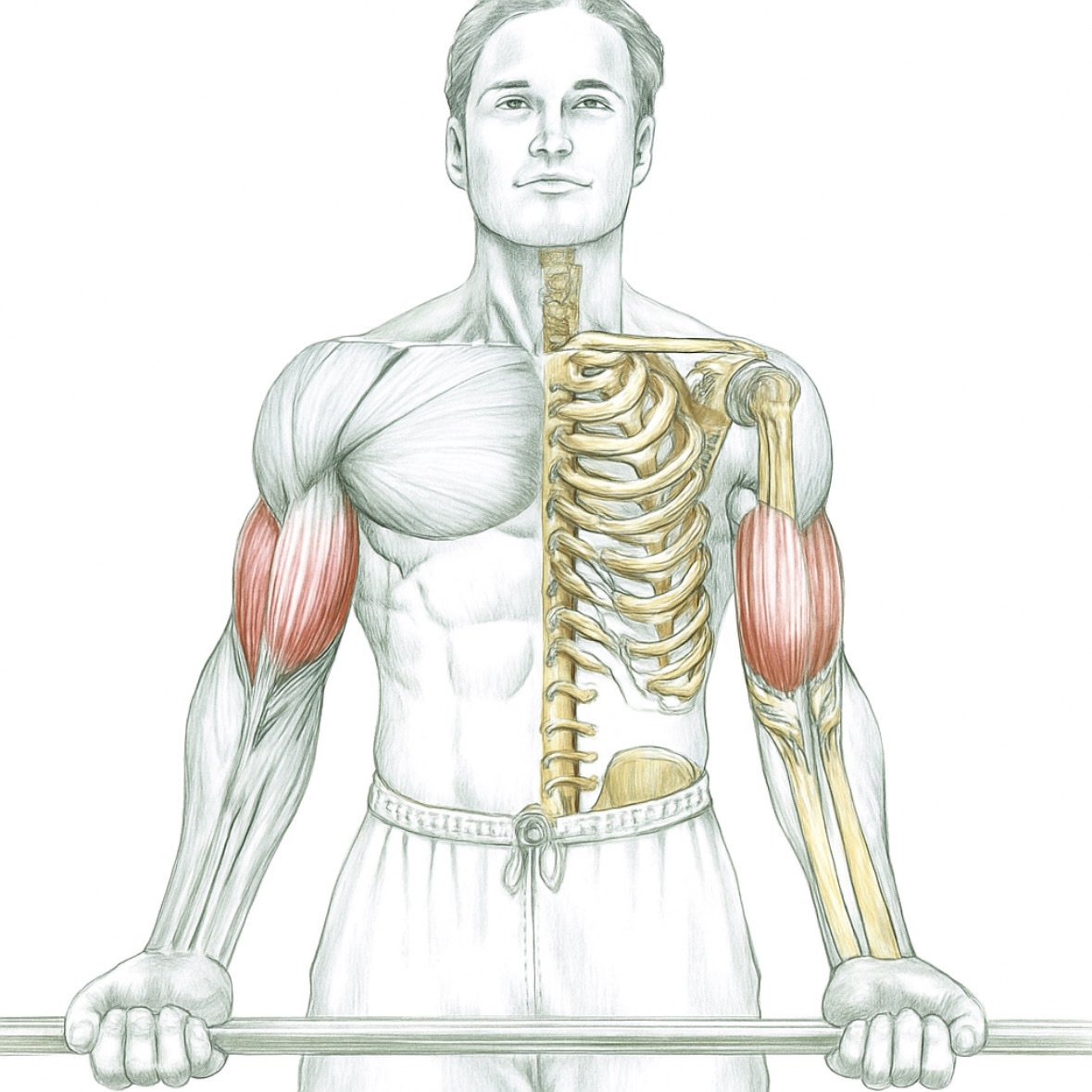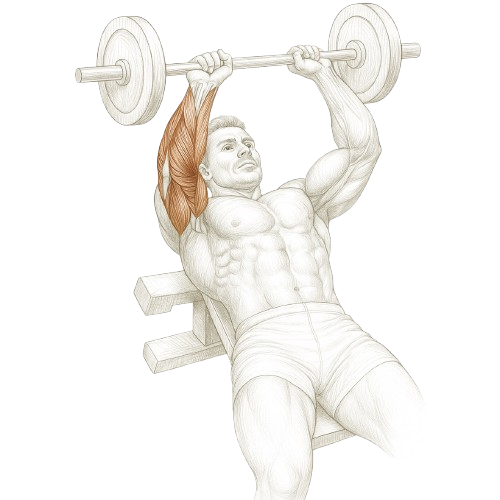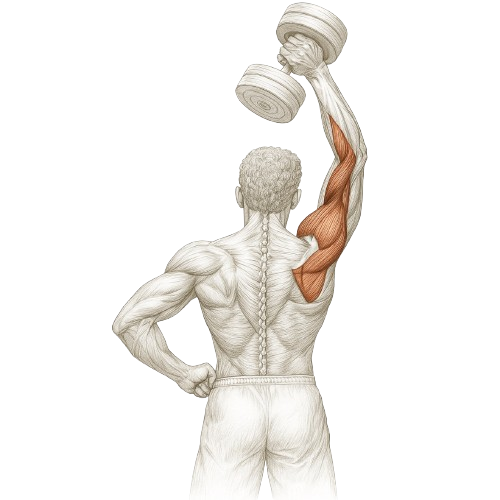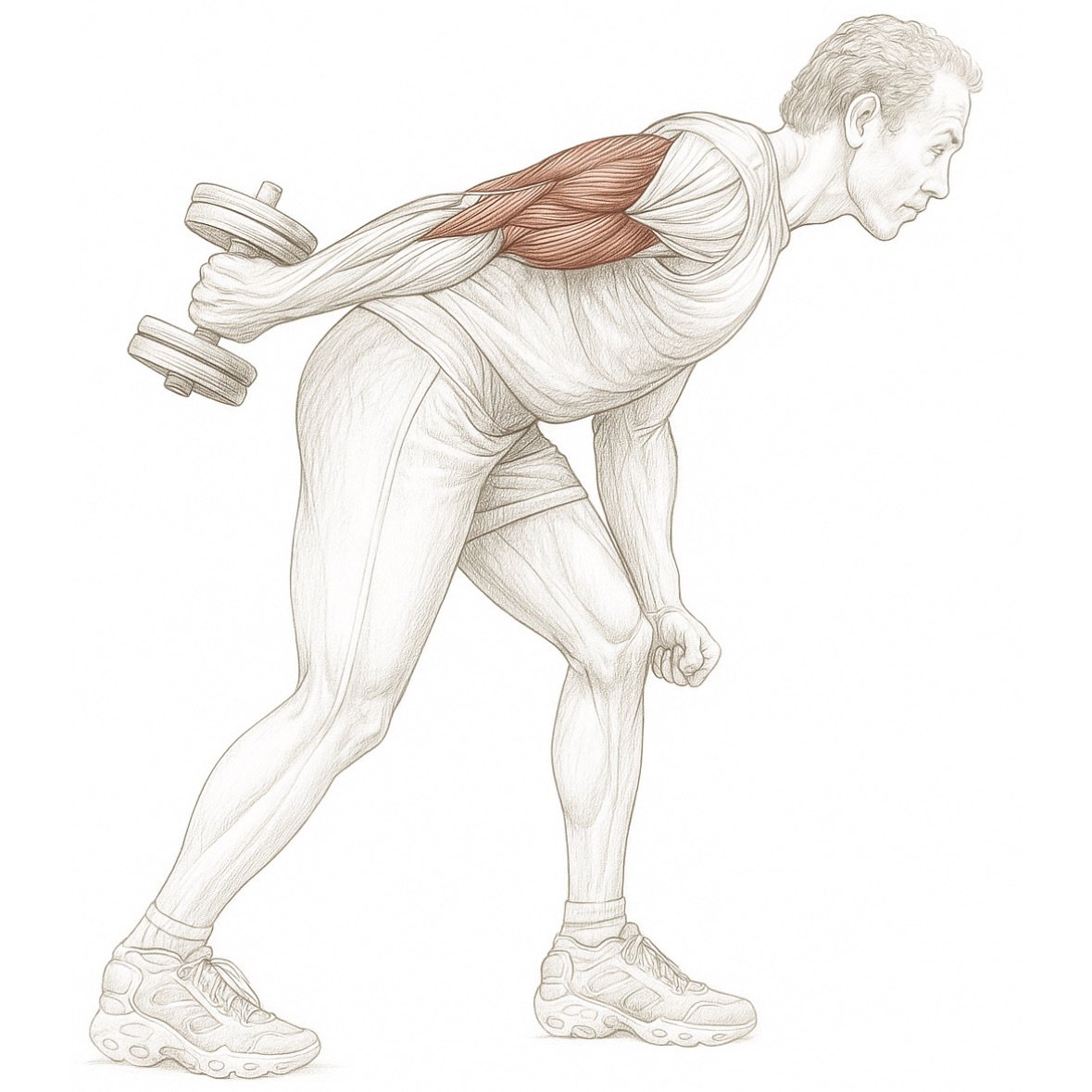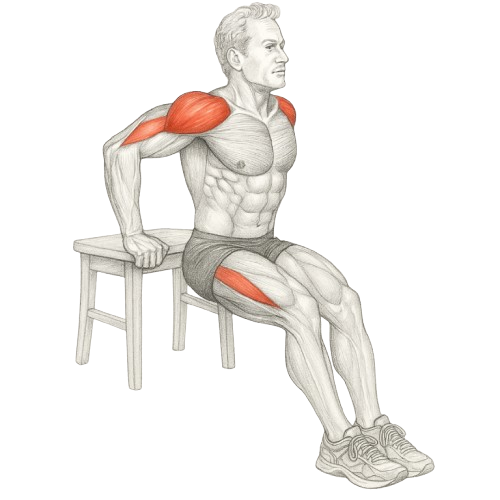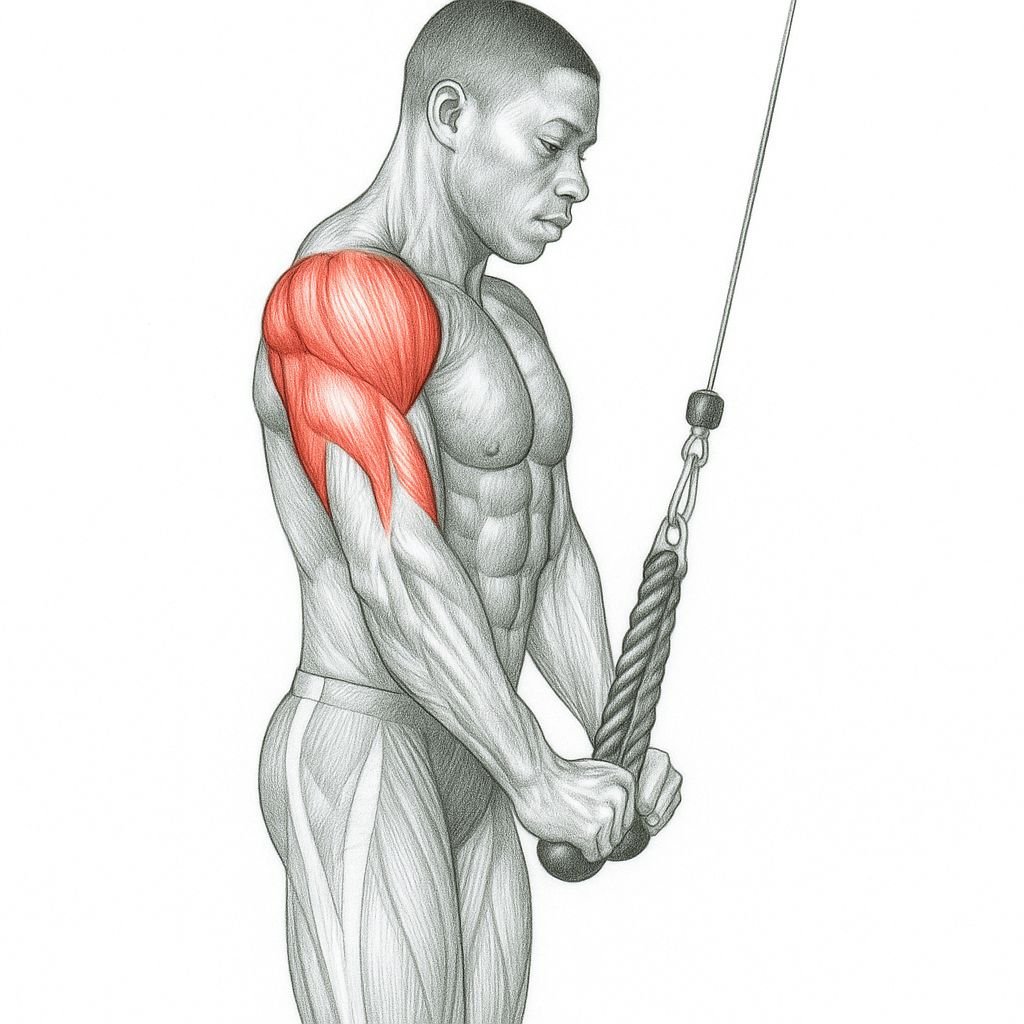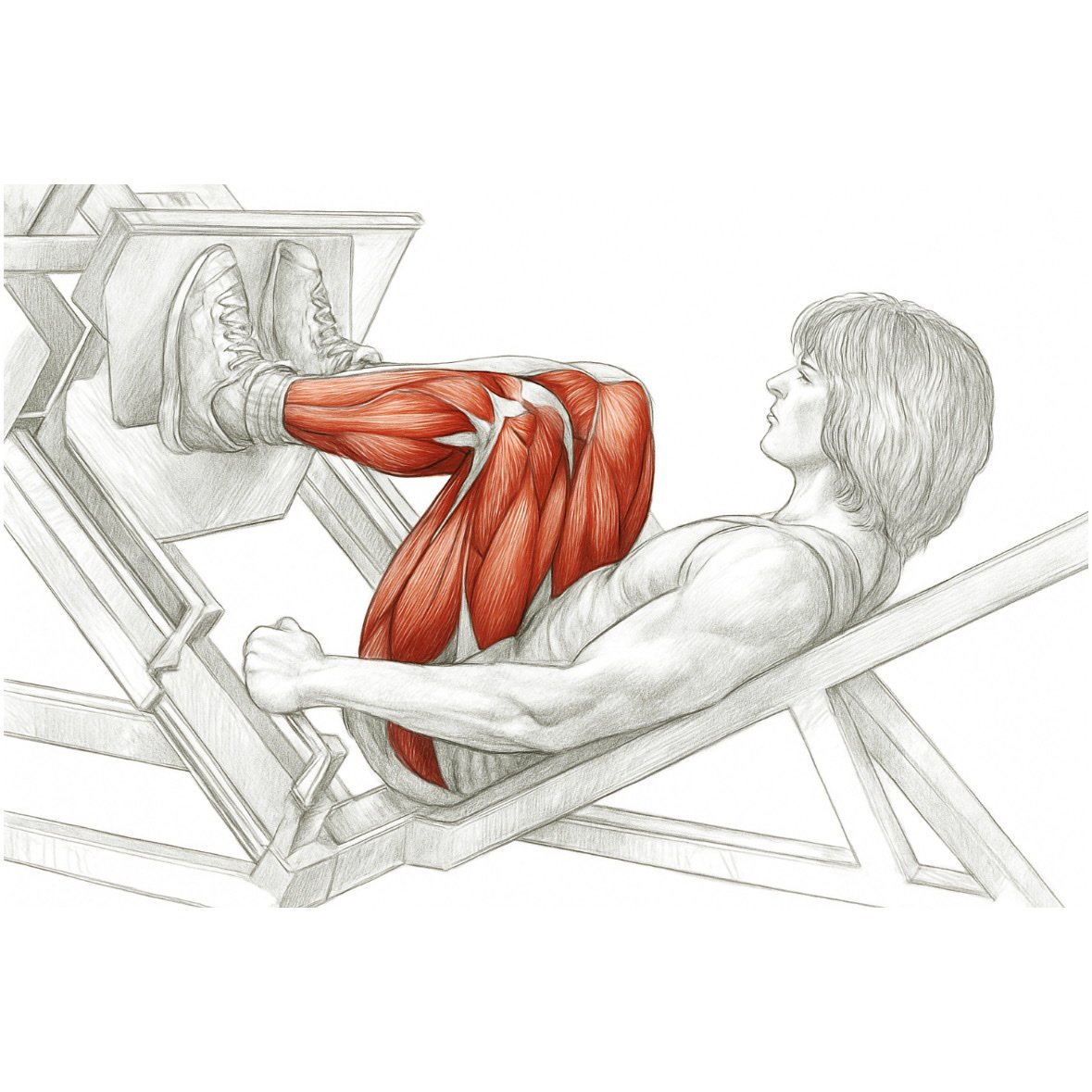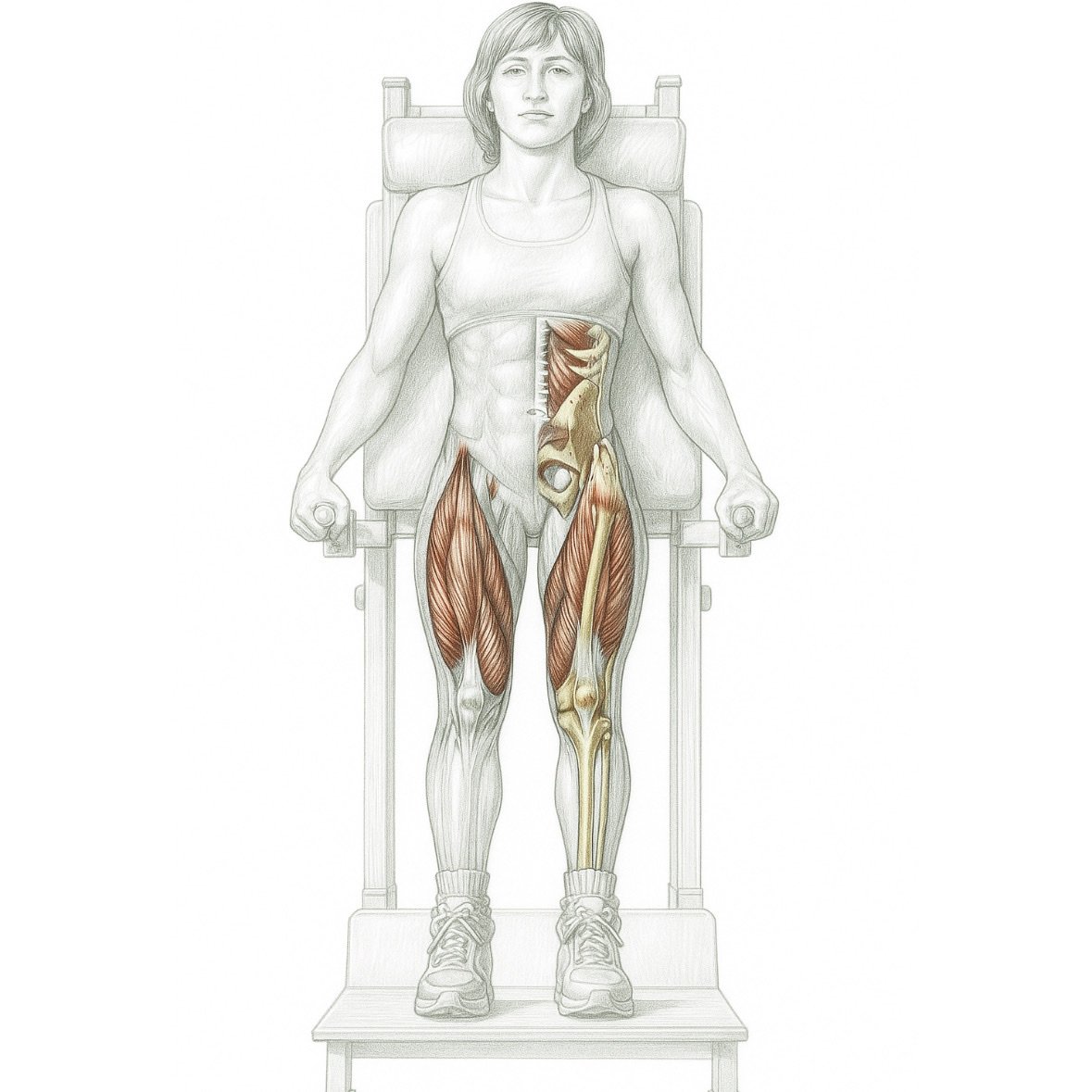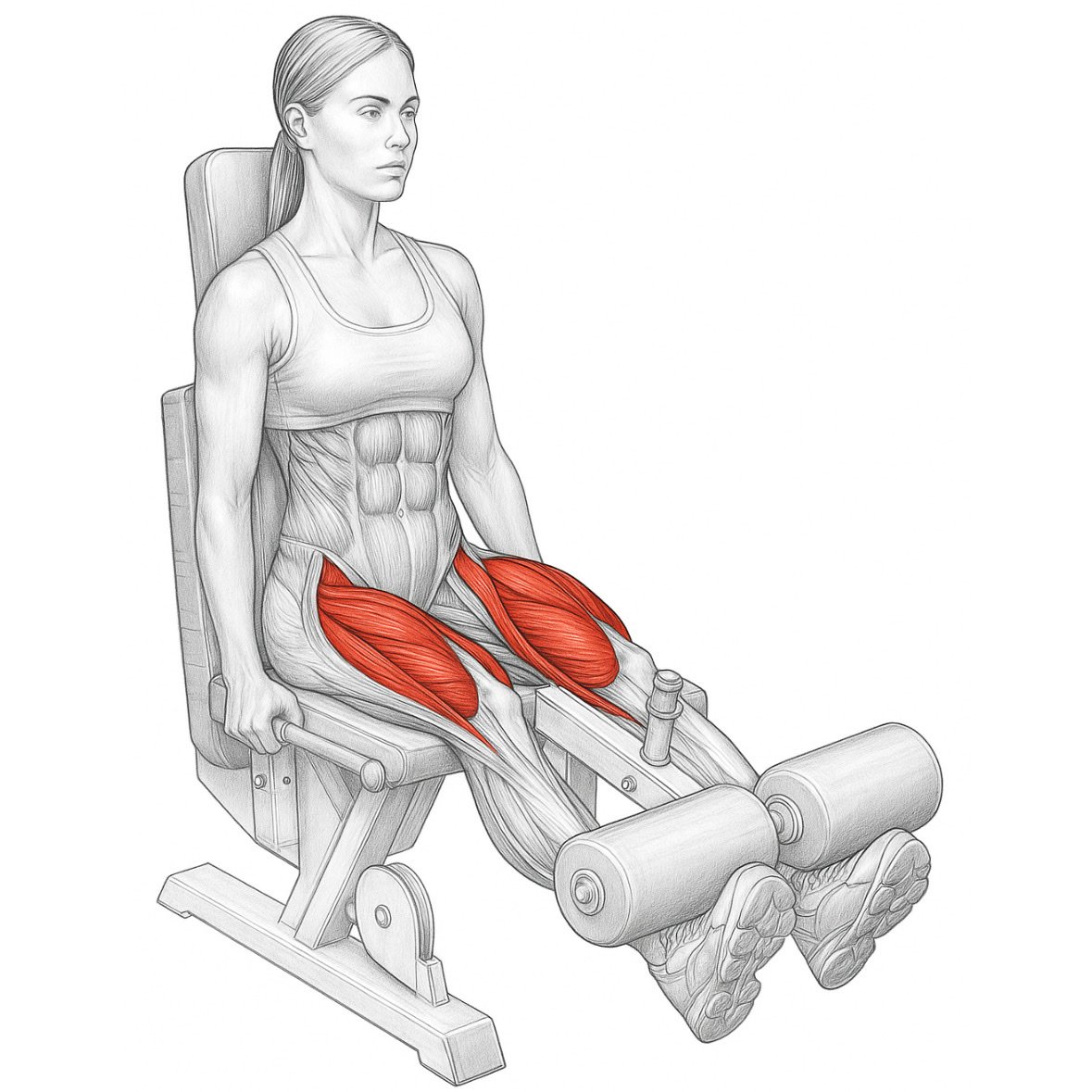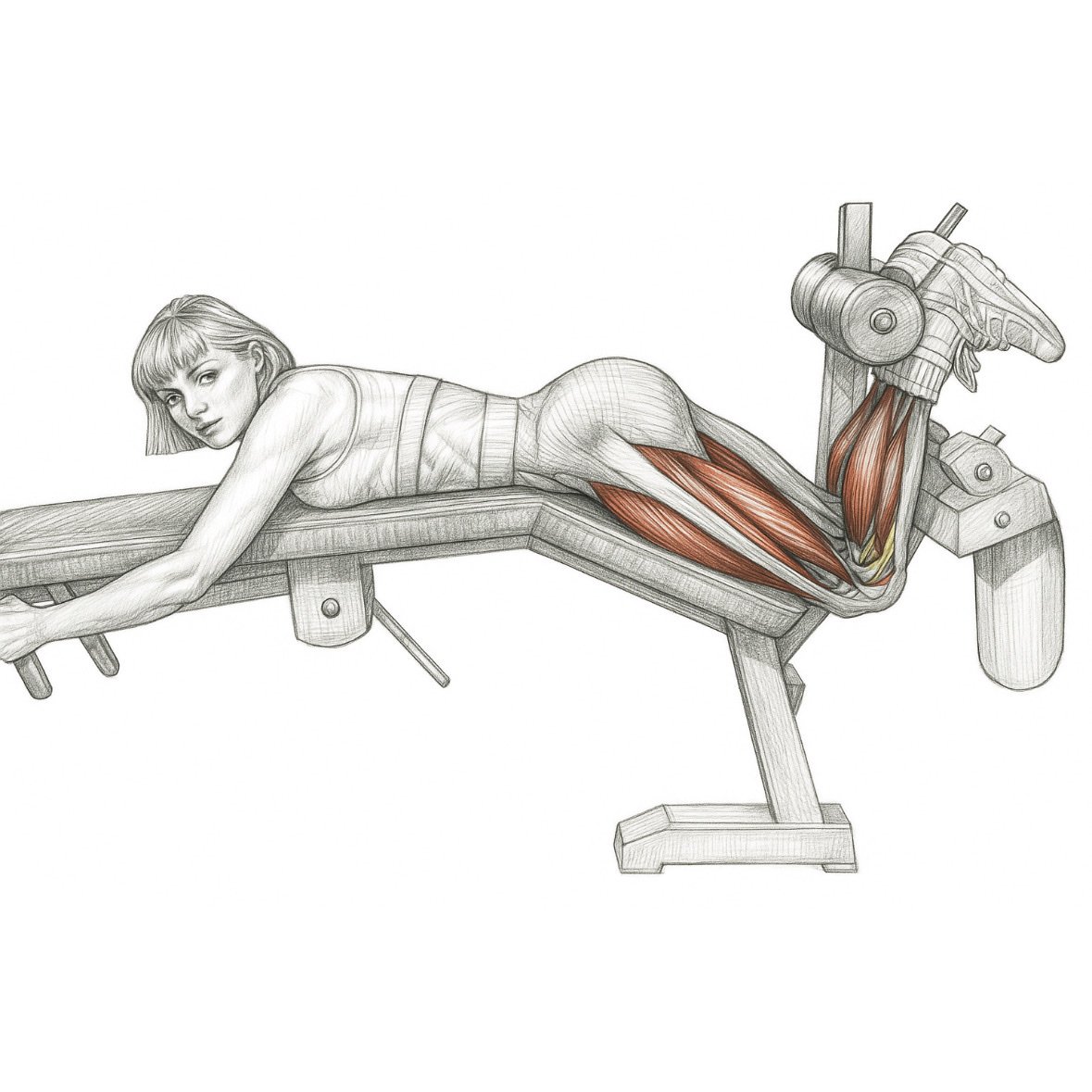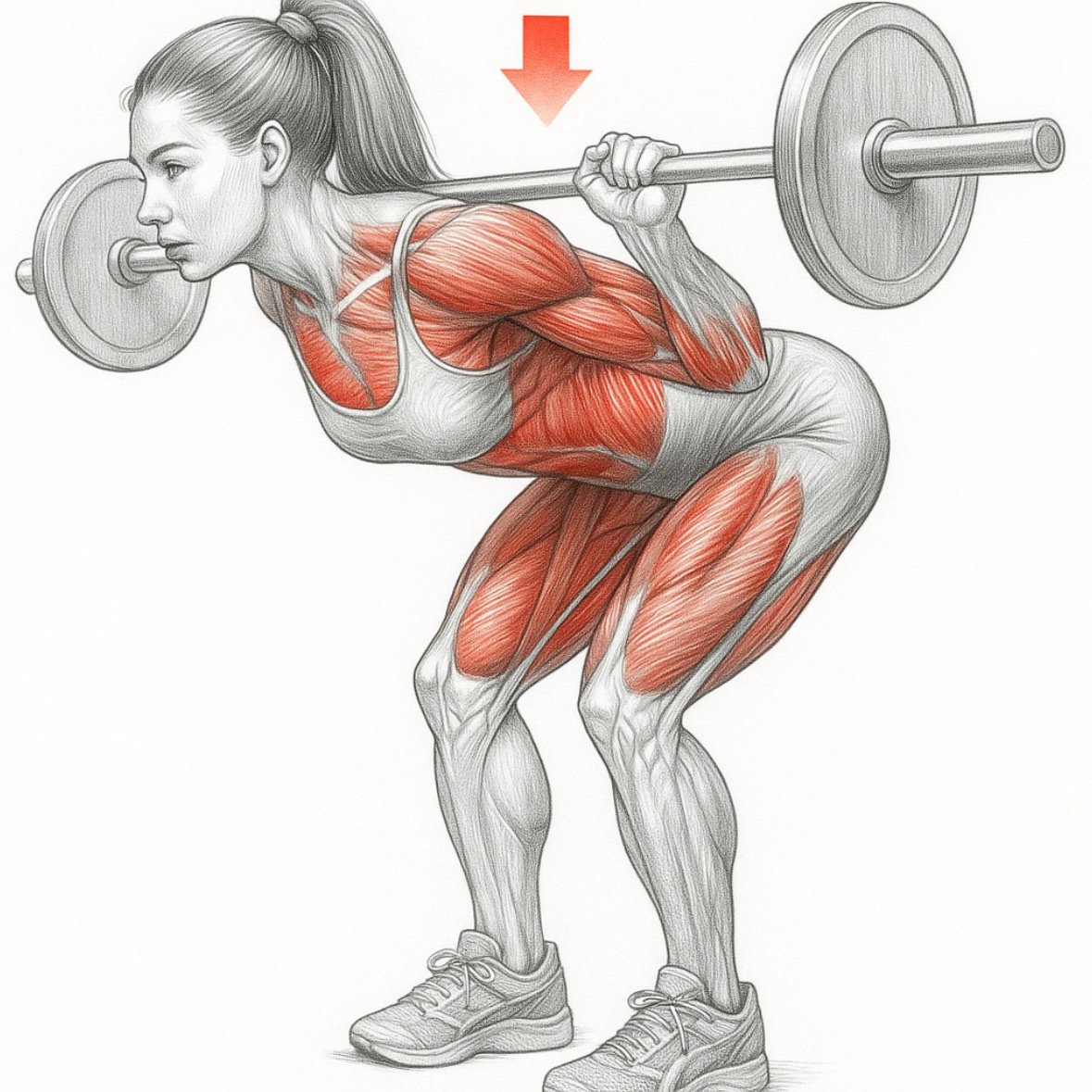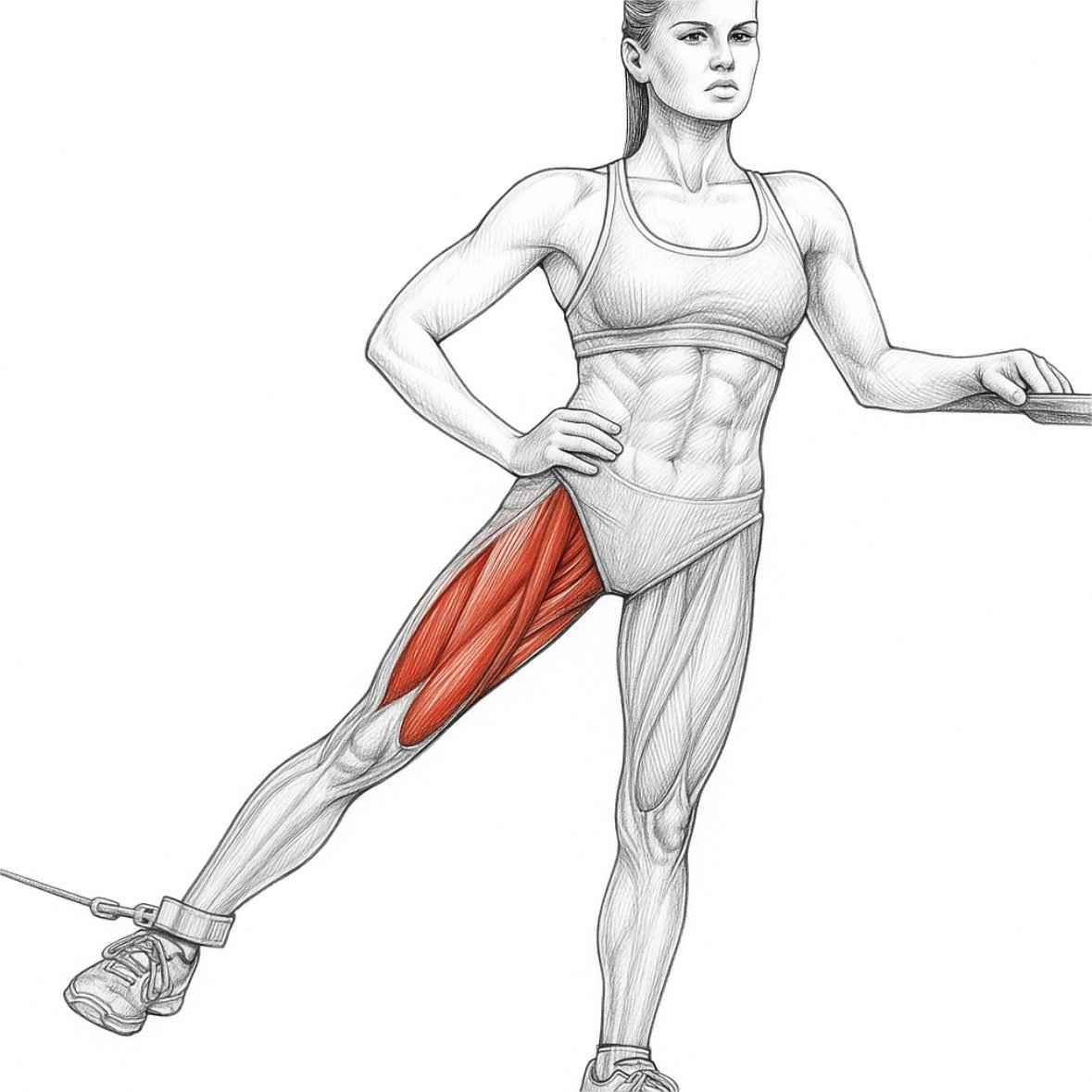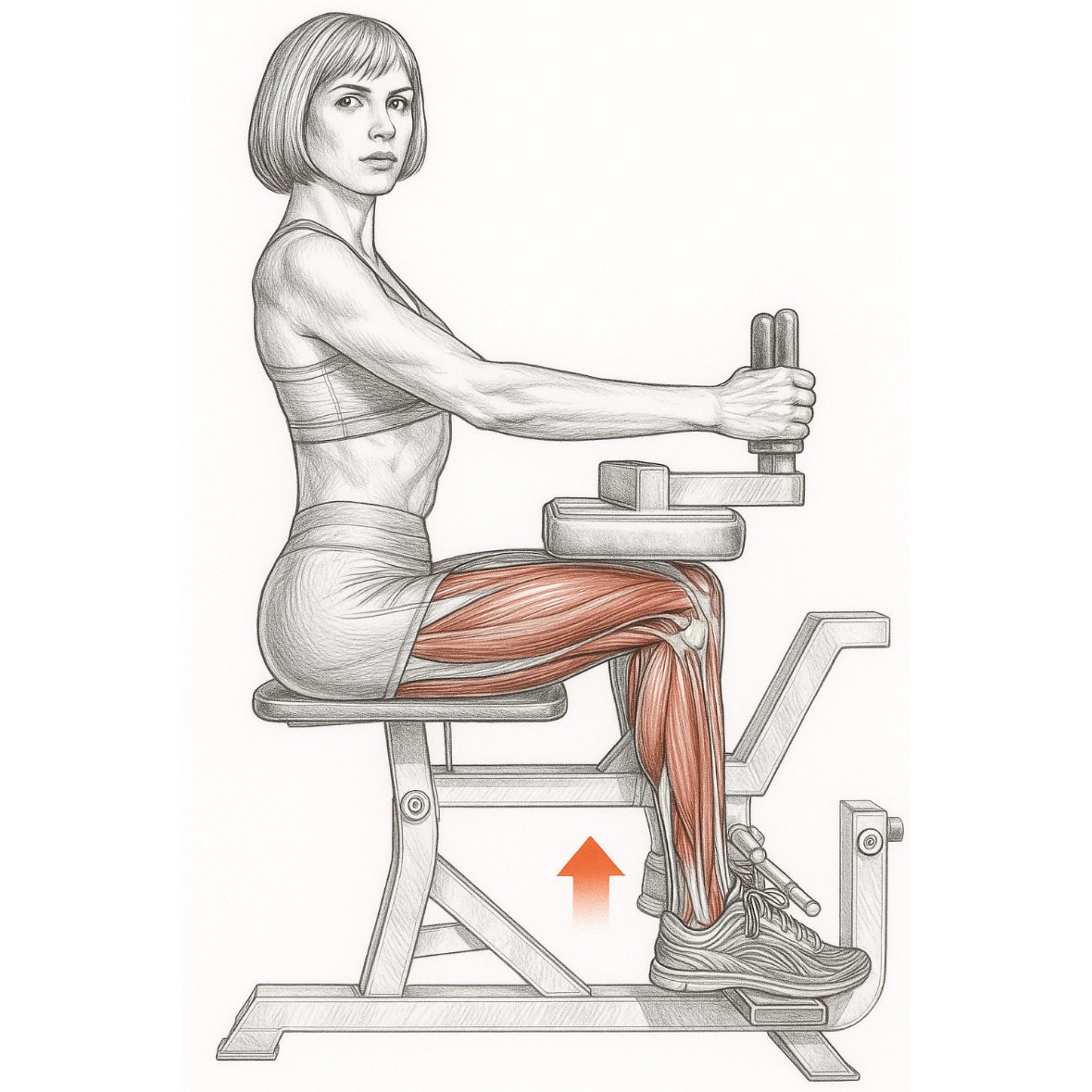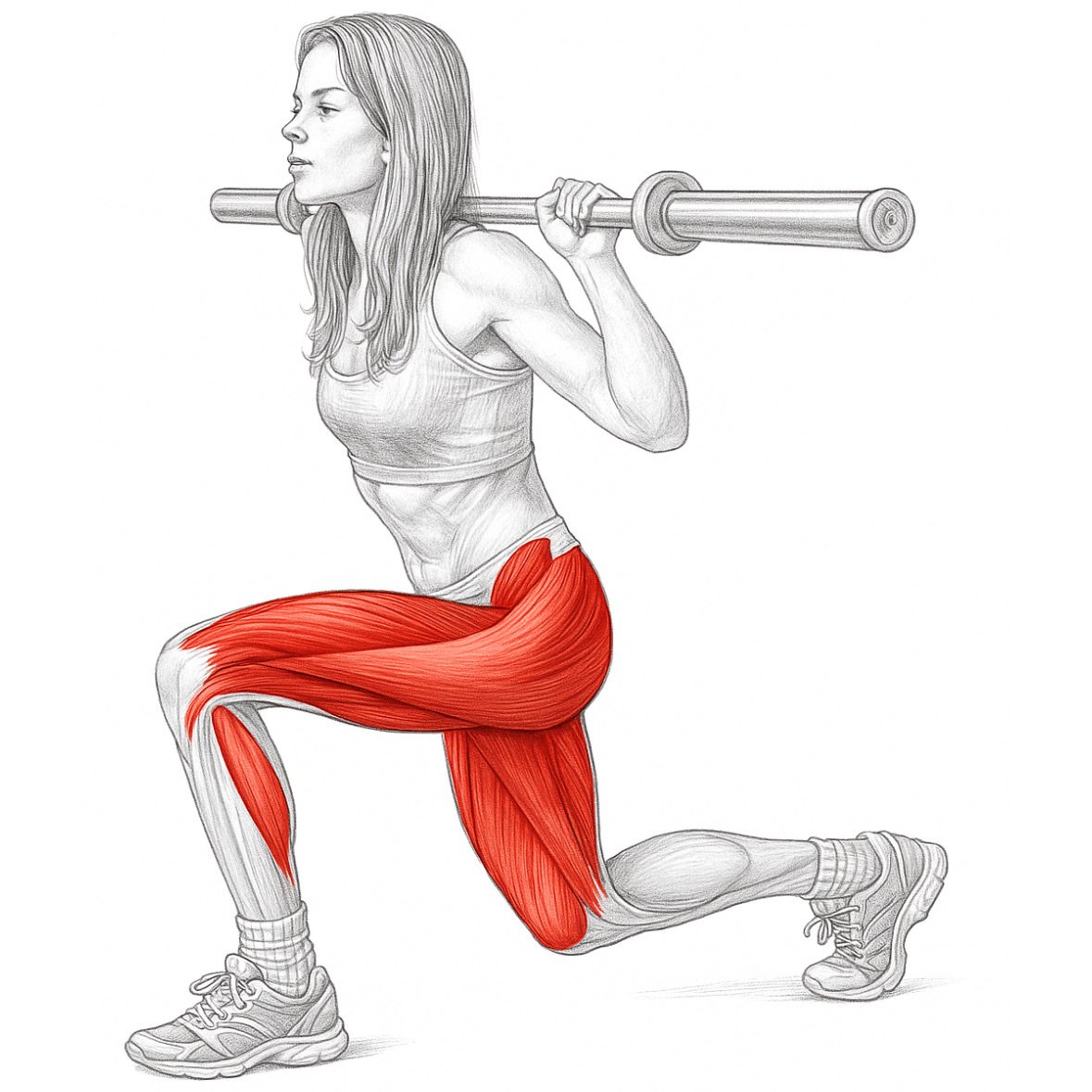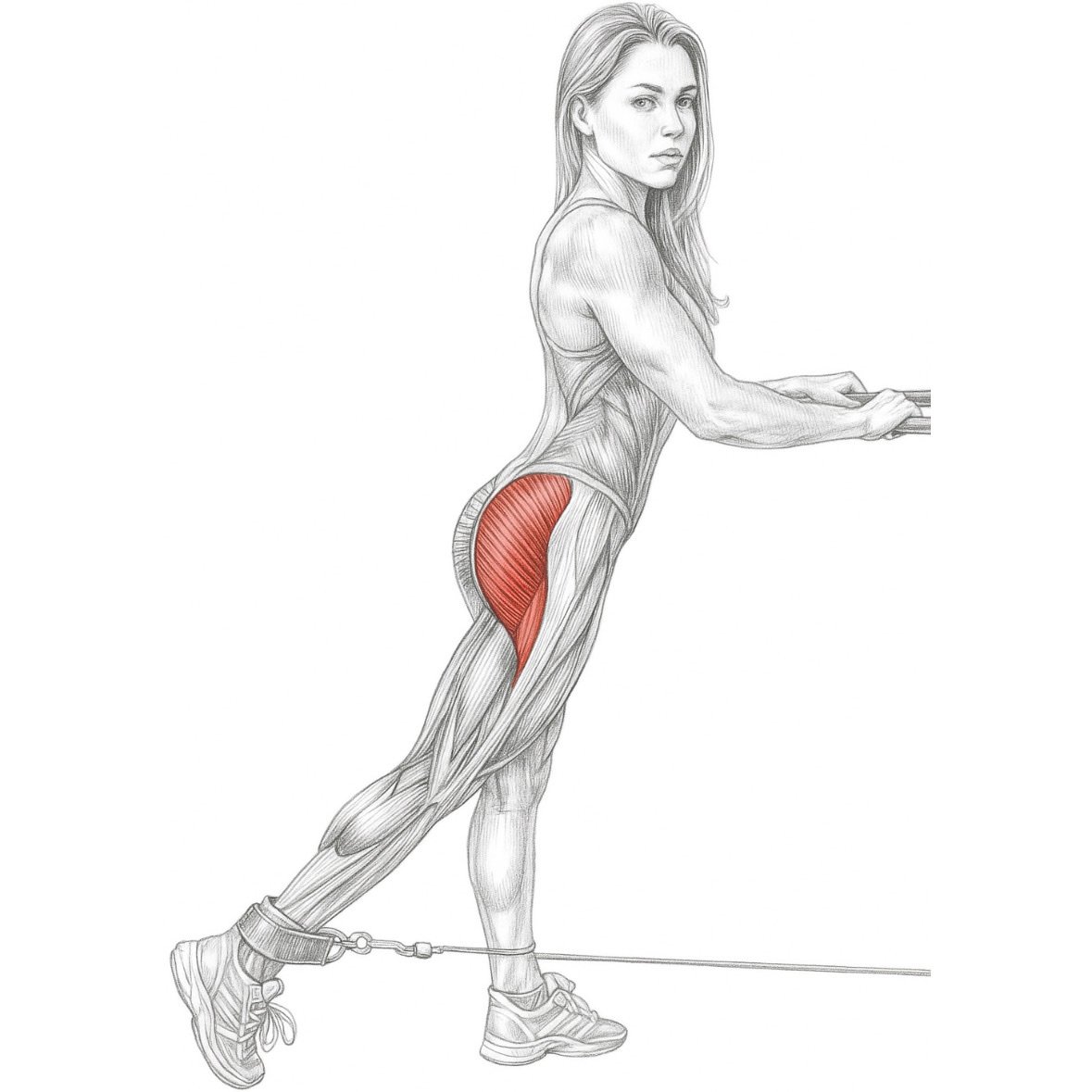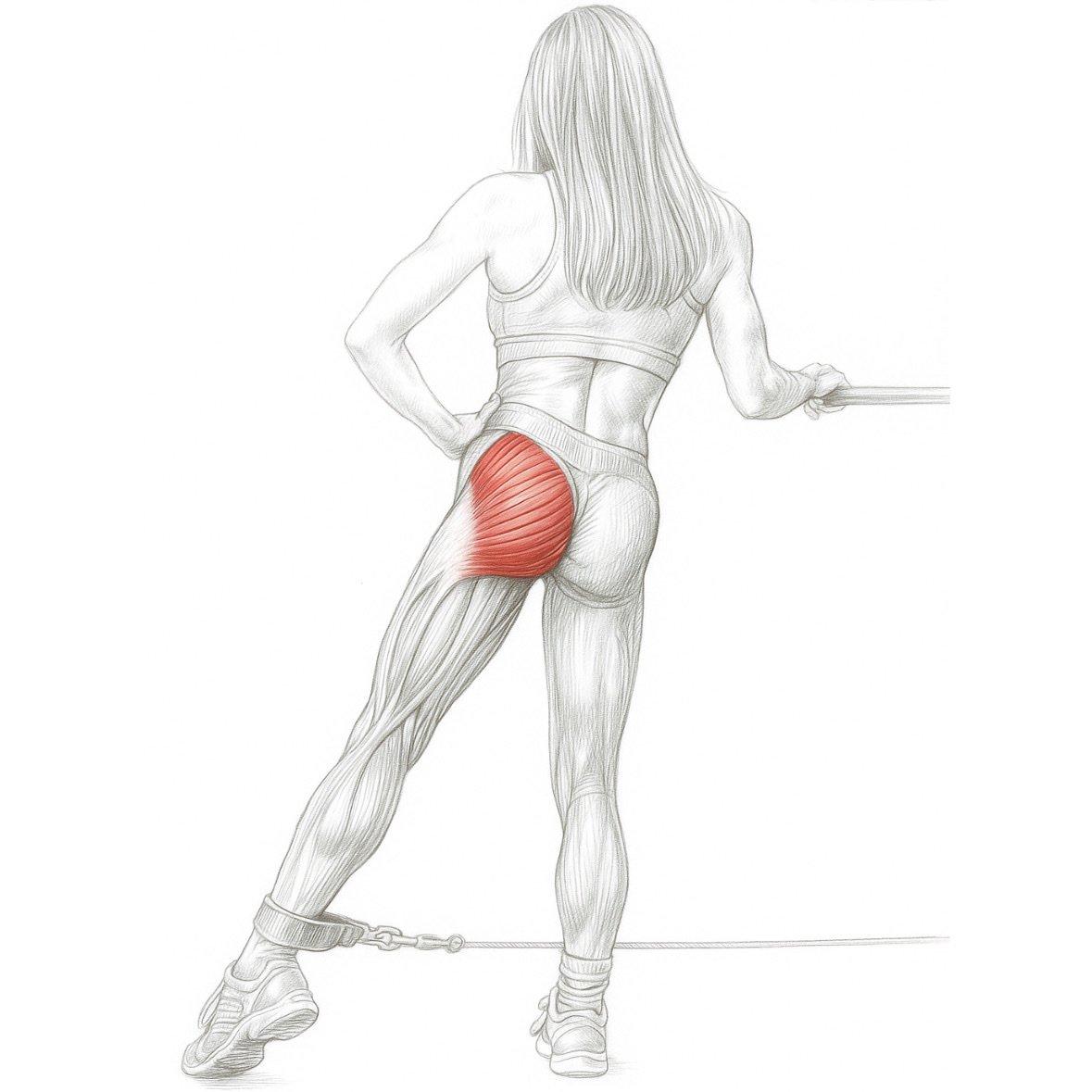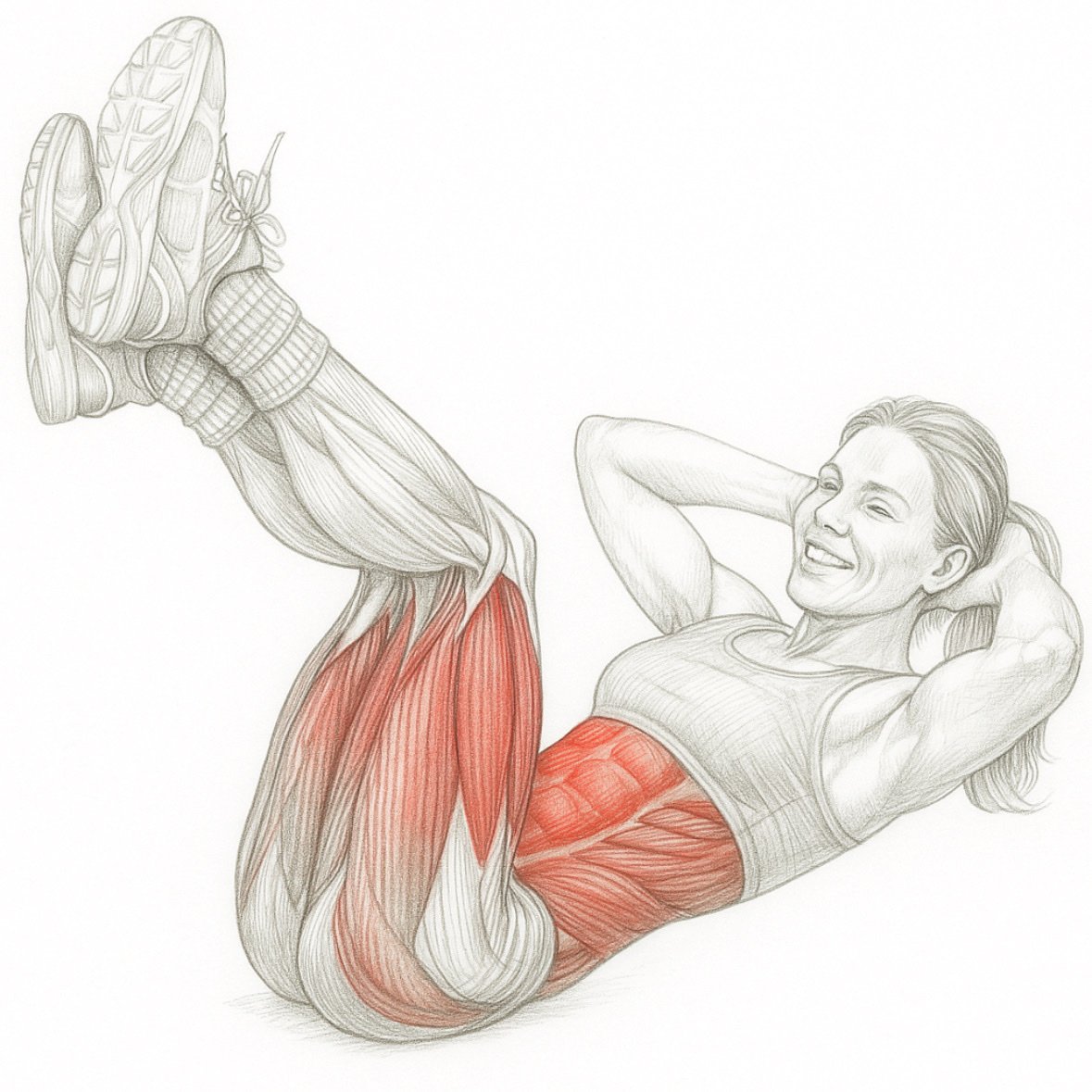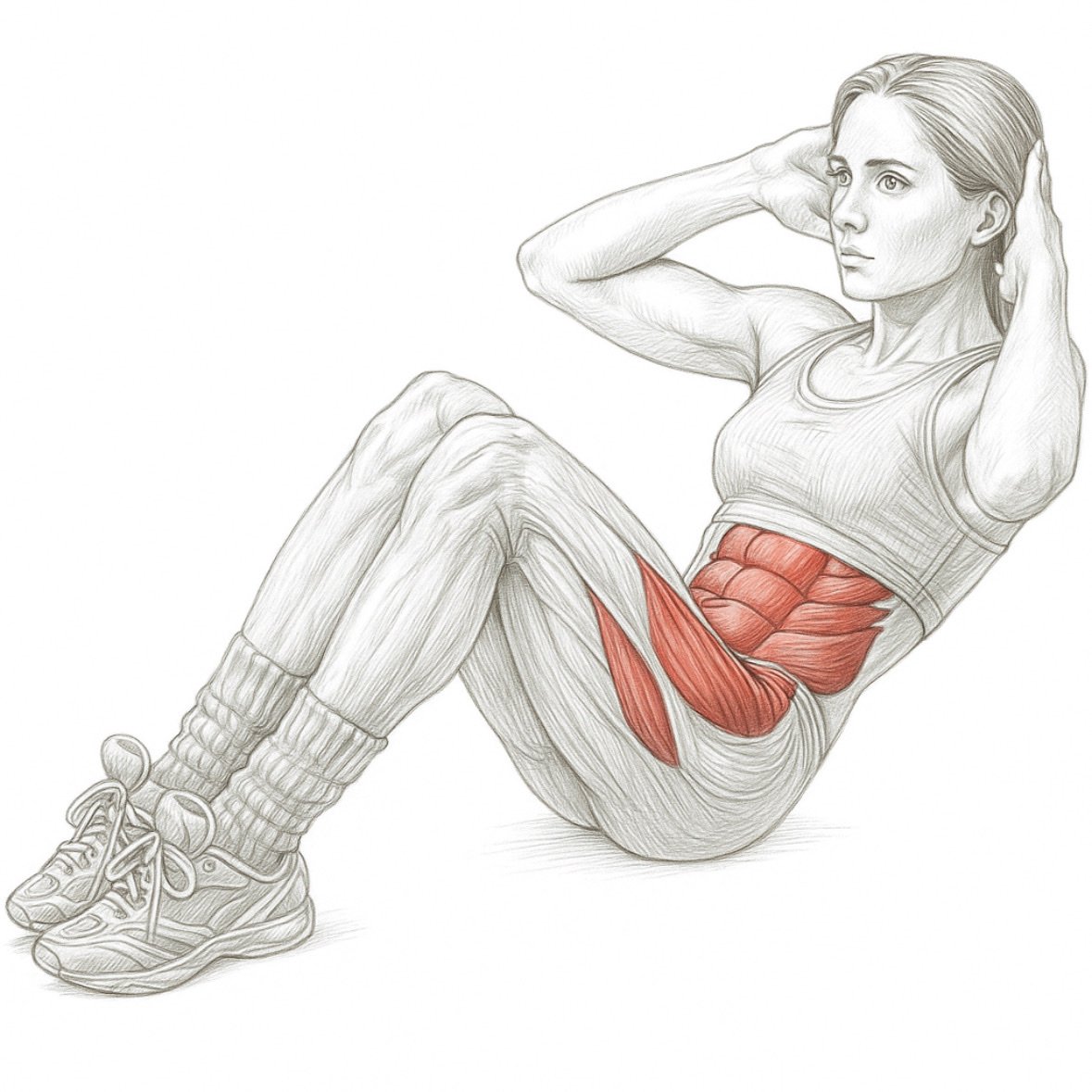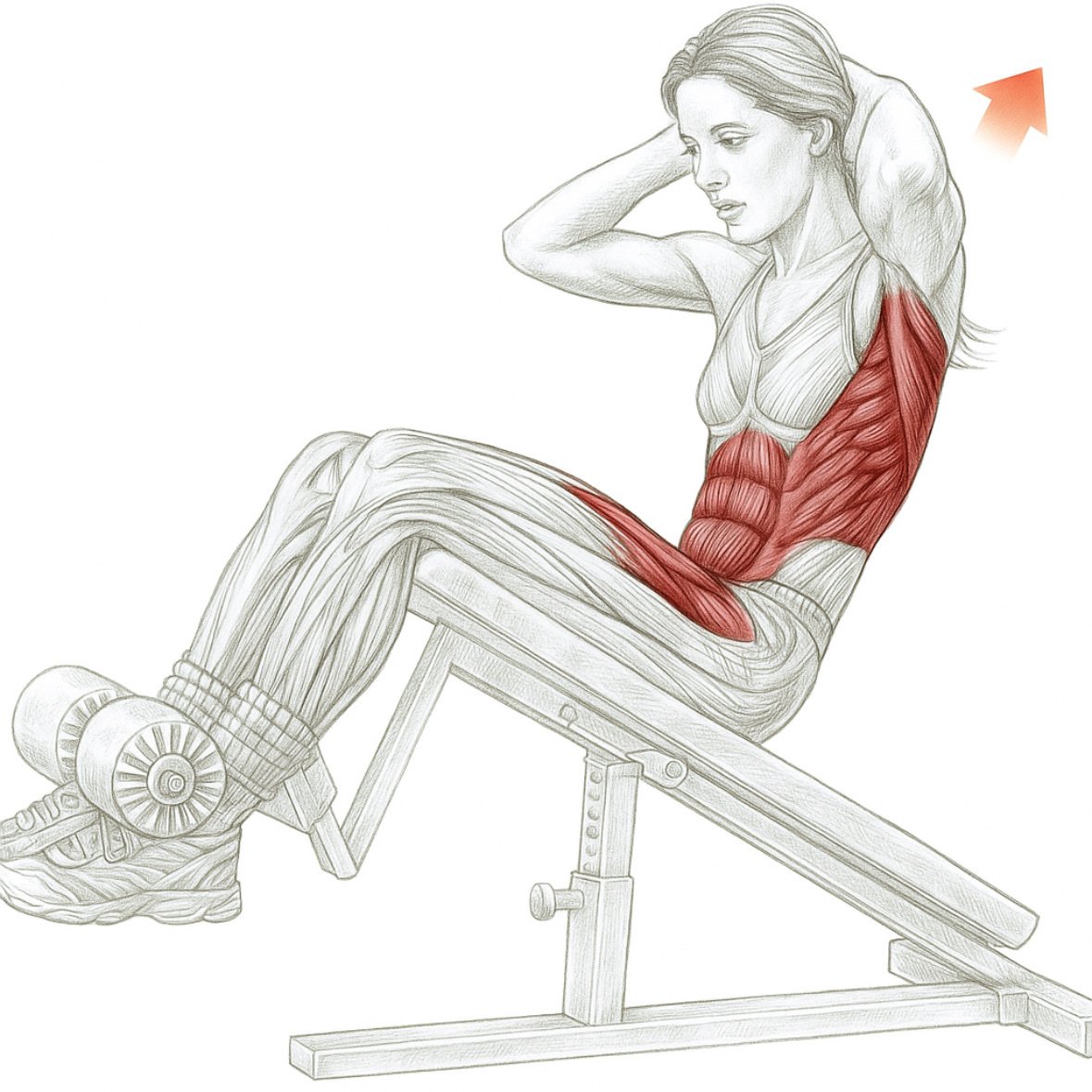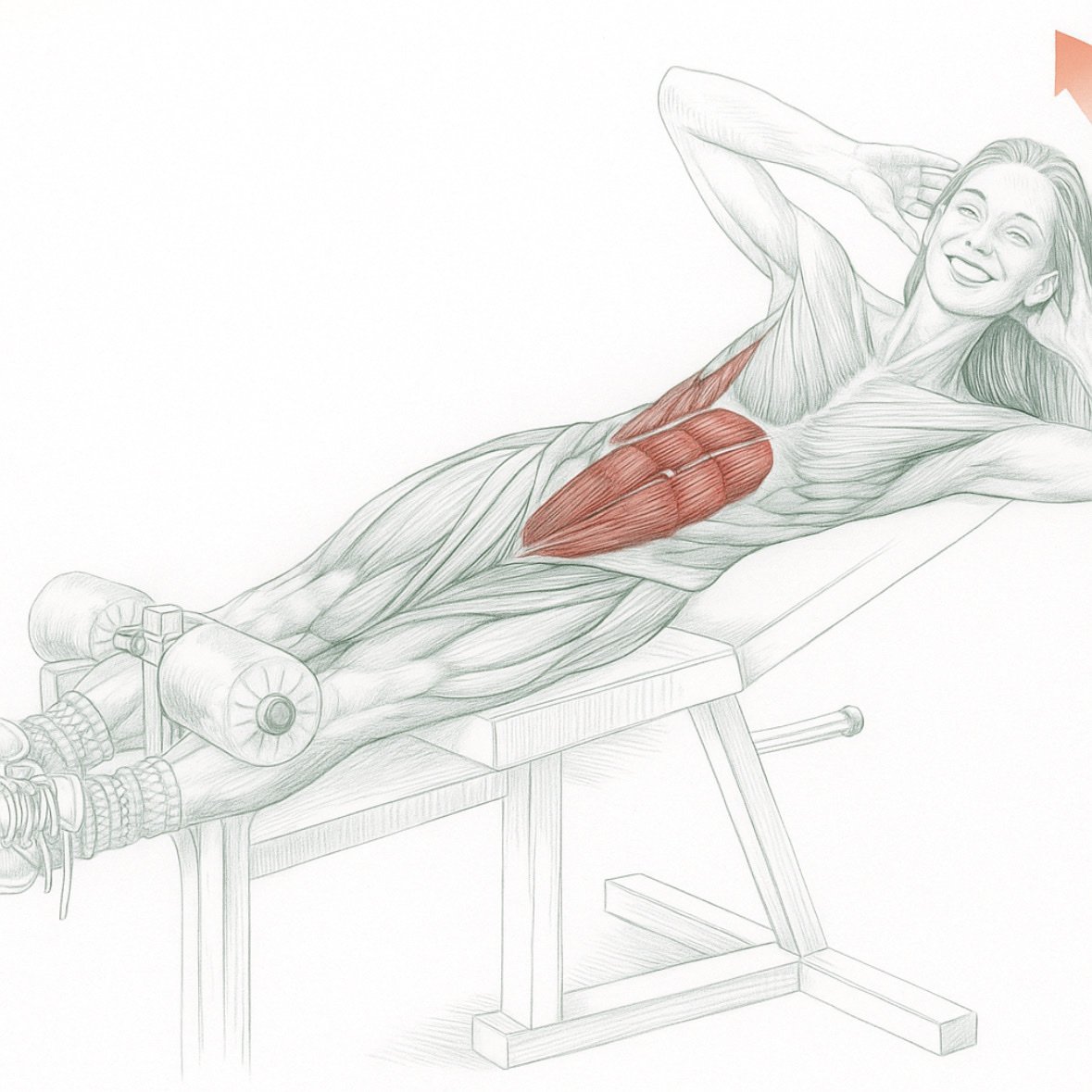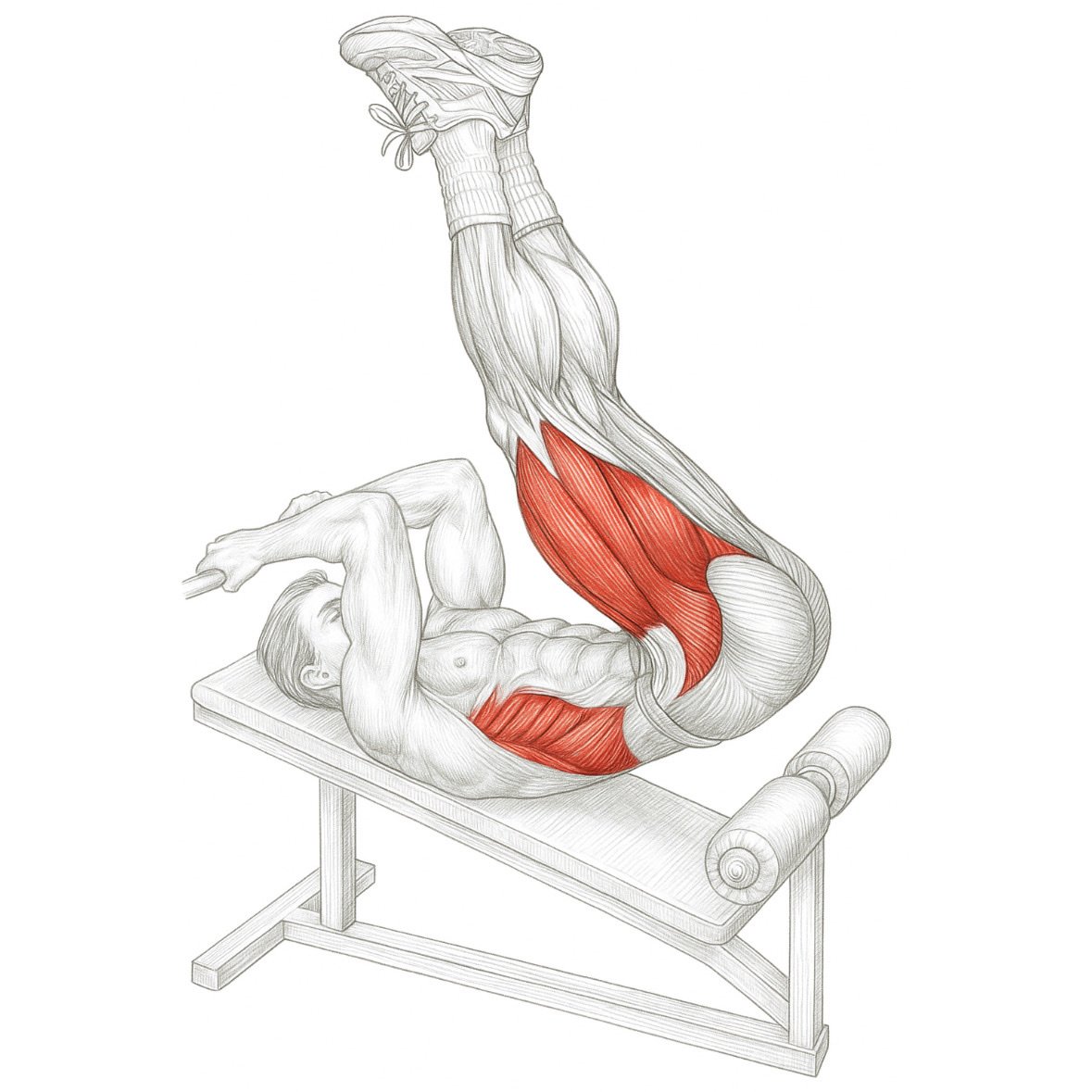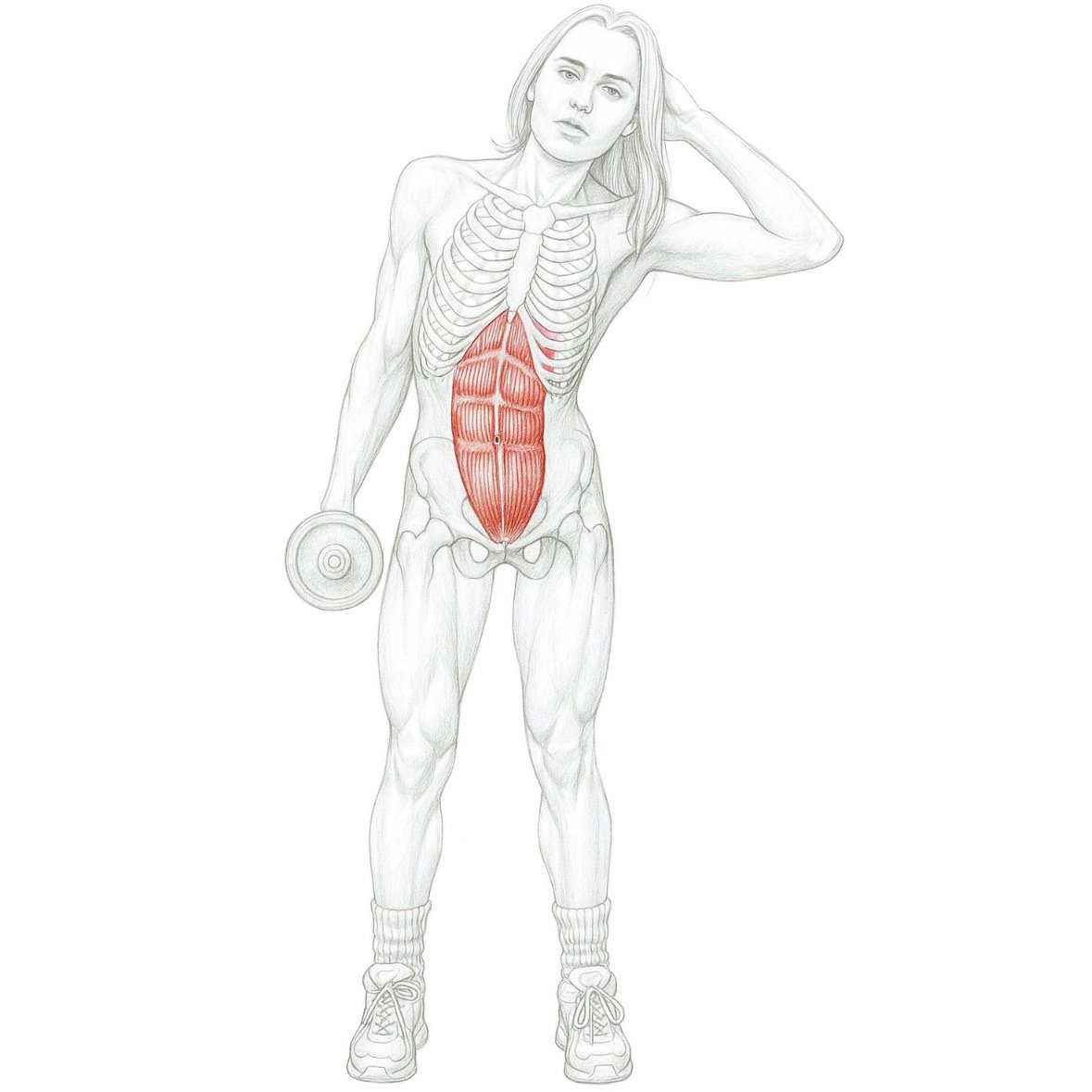Lie on the back, with hands flat on the ground, arms alongside the body, and knees bent:
- Inhale and lift the buttocks off the ground, pushing down through the feet.
- Maintain the position for a couple of seconds and lower the pelvis without touching the buttocks on the ground.
- Exhale and begin again.
This exercise mainly works the hamstrings and gluteus maximus. Perform this exercise in long sets, making sure to contract the muscles at the top of the lift, when the pelvis is off the ground.
Comment: Because it is easy and effective, bridging has become part of most group exercise classes.
Variation 1: To perform bridging with the feet raised, lie on the back, with hands flat at the sides, arms alongside the body, thighs vertical, and feet resting on a bench:
- Inhale and raise the pelvis off the ground; maintain the position for two seconds and lower without touching the buttocks to the ground.
- Exhale and begin again.
This exercise works the gluteus maximus and especially the hamstrings. The hamstrings are used more in this exercise than when bridging from the ground. Execute this exercise slowly, and focus on the muscle contraction. Sets of 10 to 15 repetitions provide the best results.
Another variation is to perform bridging with the calves resting on the bench. This isolates the hamstrings even more intensely and also requires strong work from the gastrocnemius.
Variation 2: Limit the range of the movement by not lowering the pelvis as far and create a burn.
Note: Bridging is actually extending the hips.
